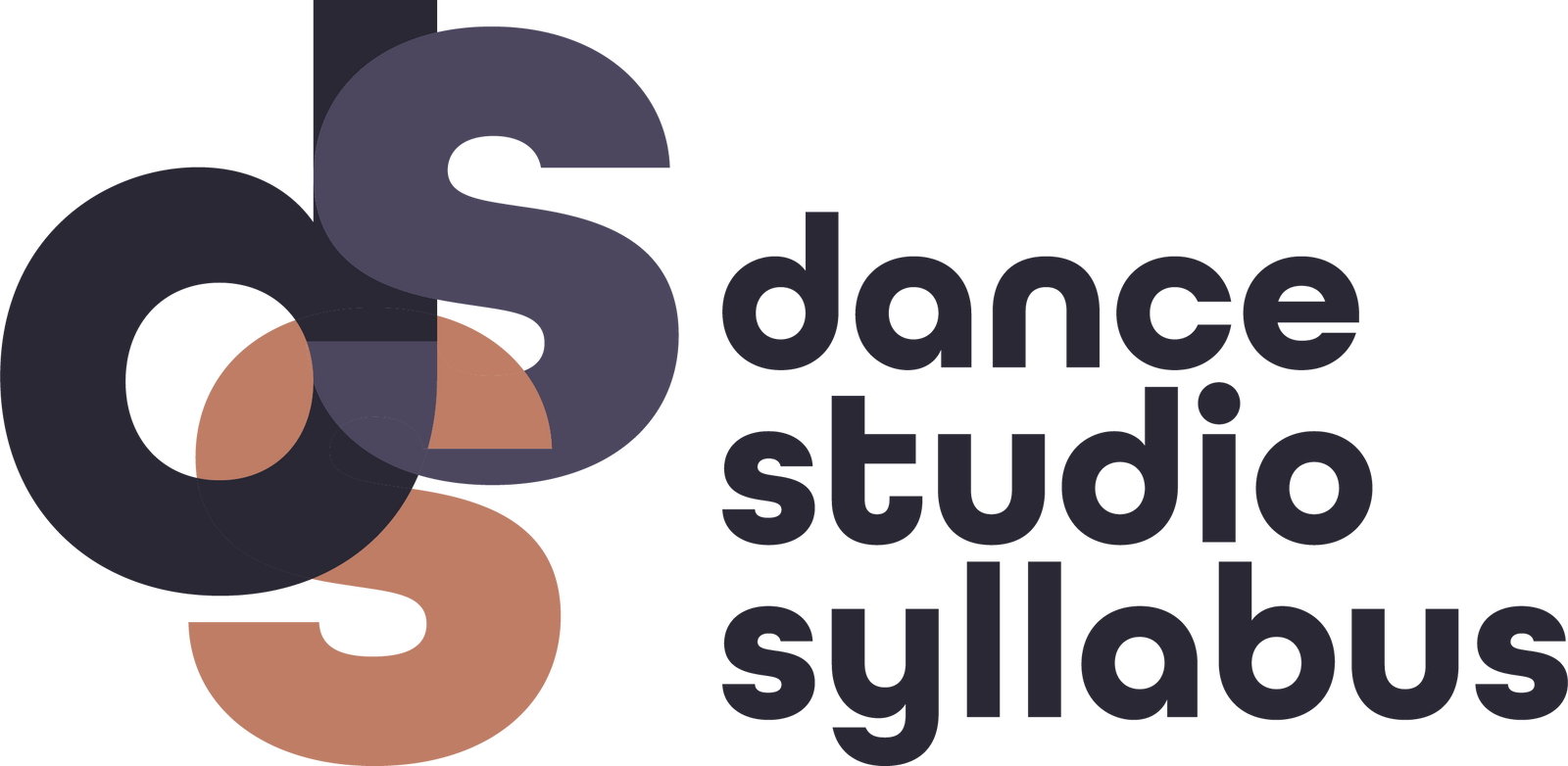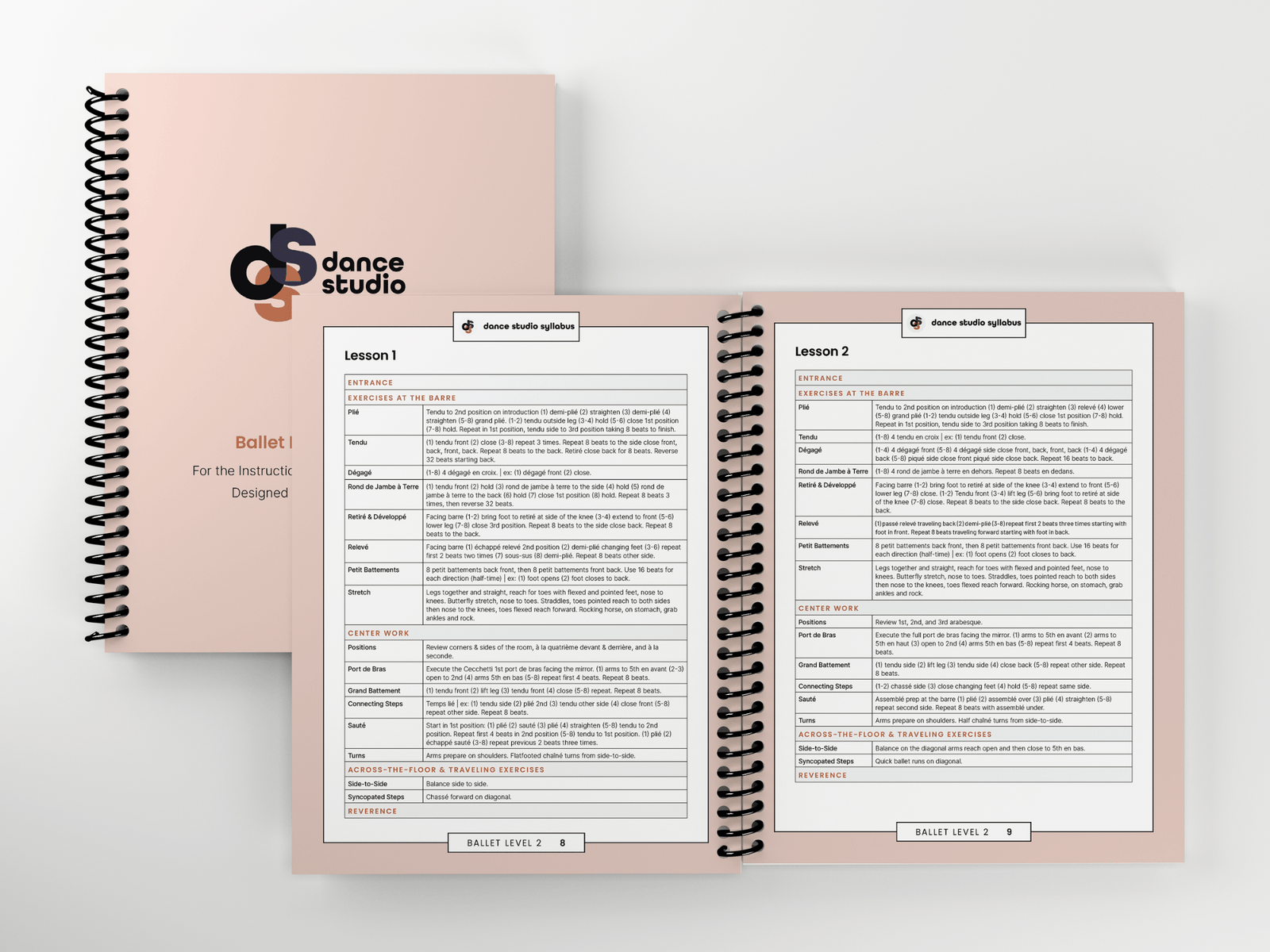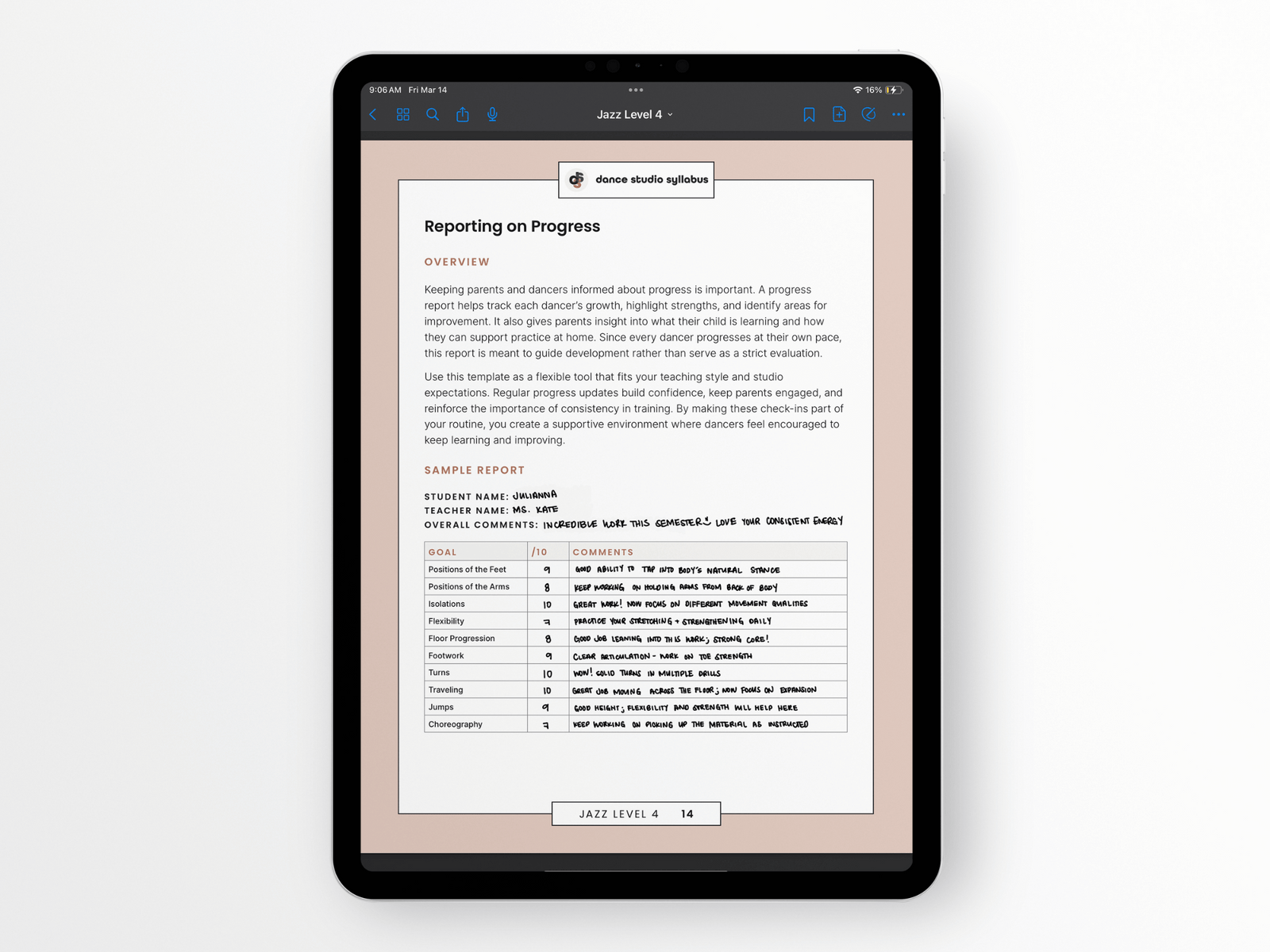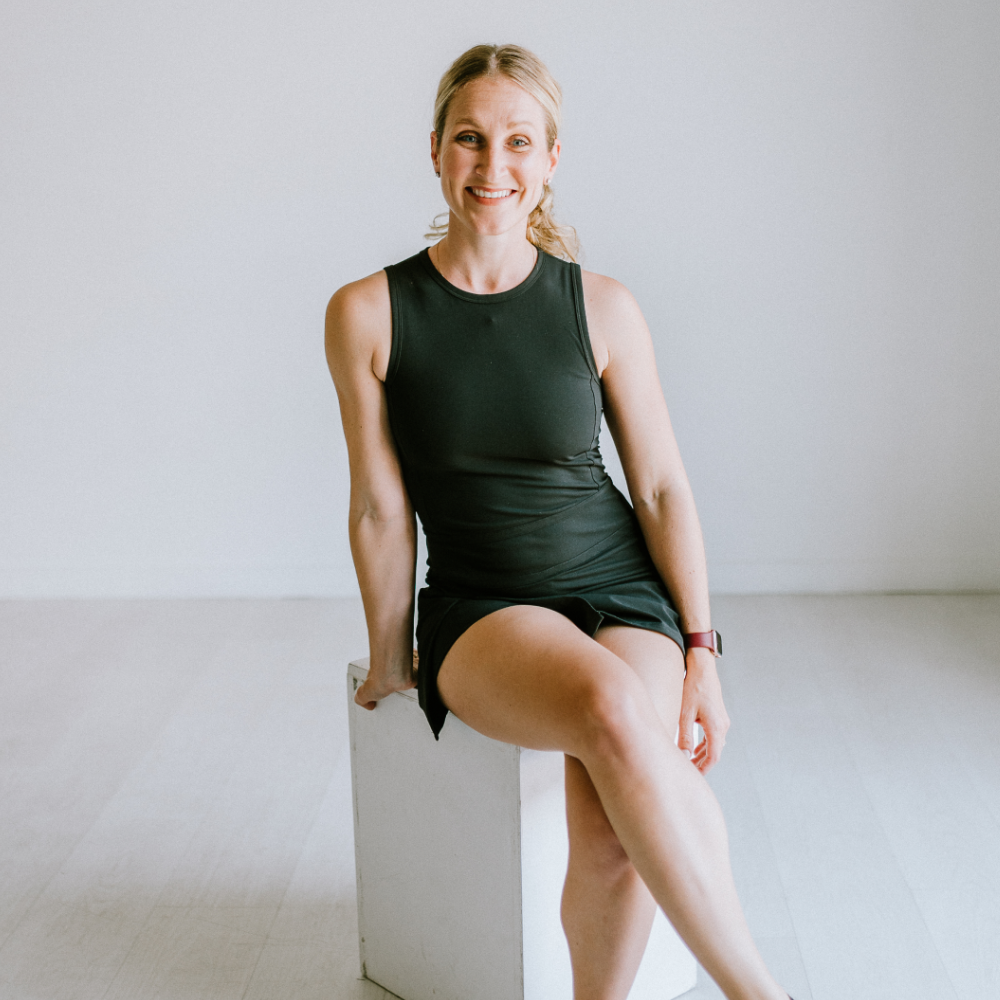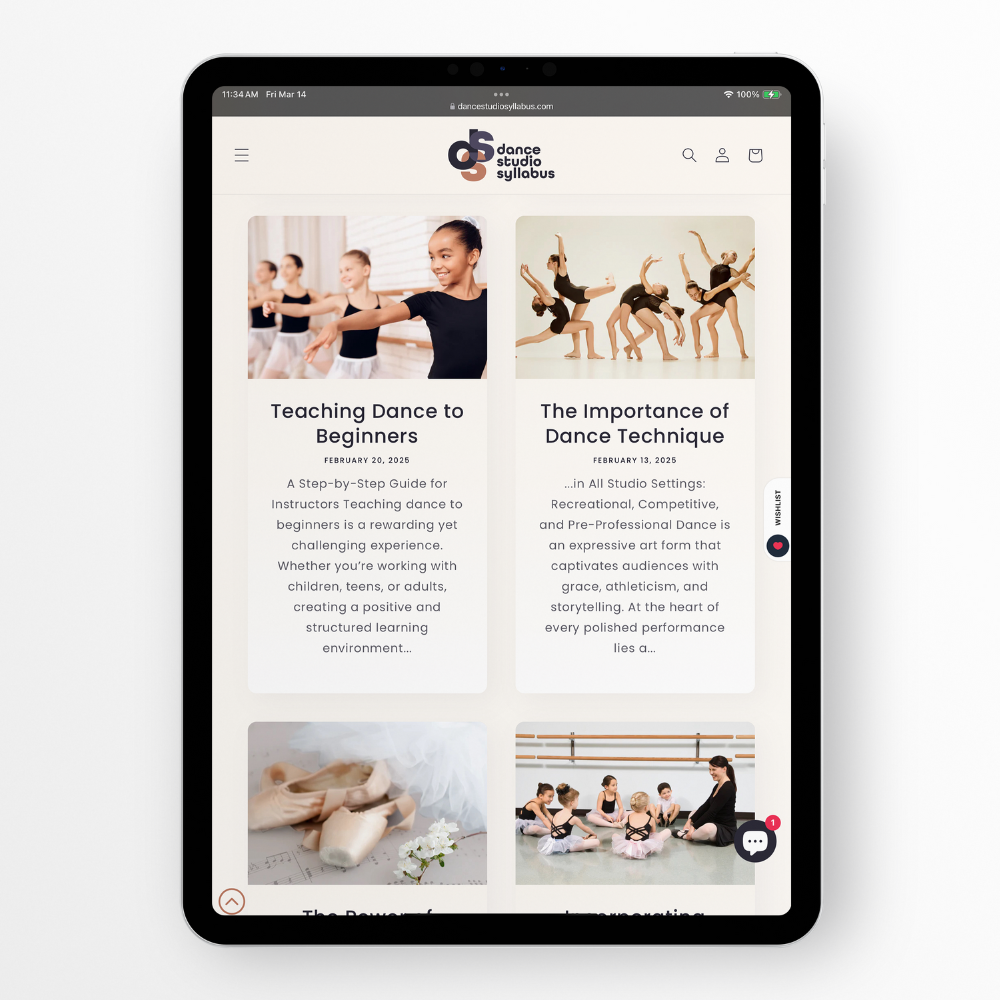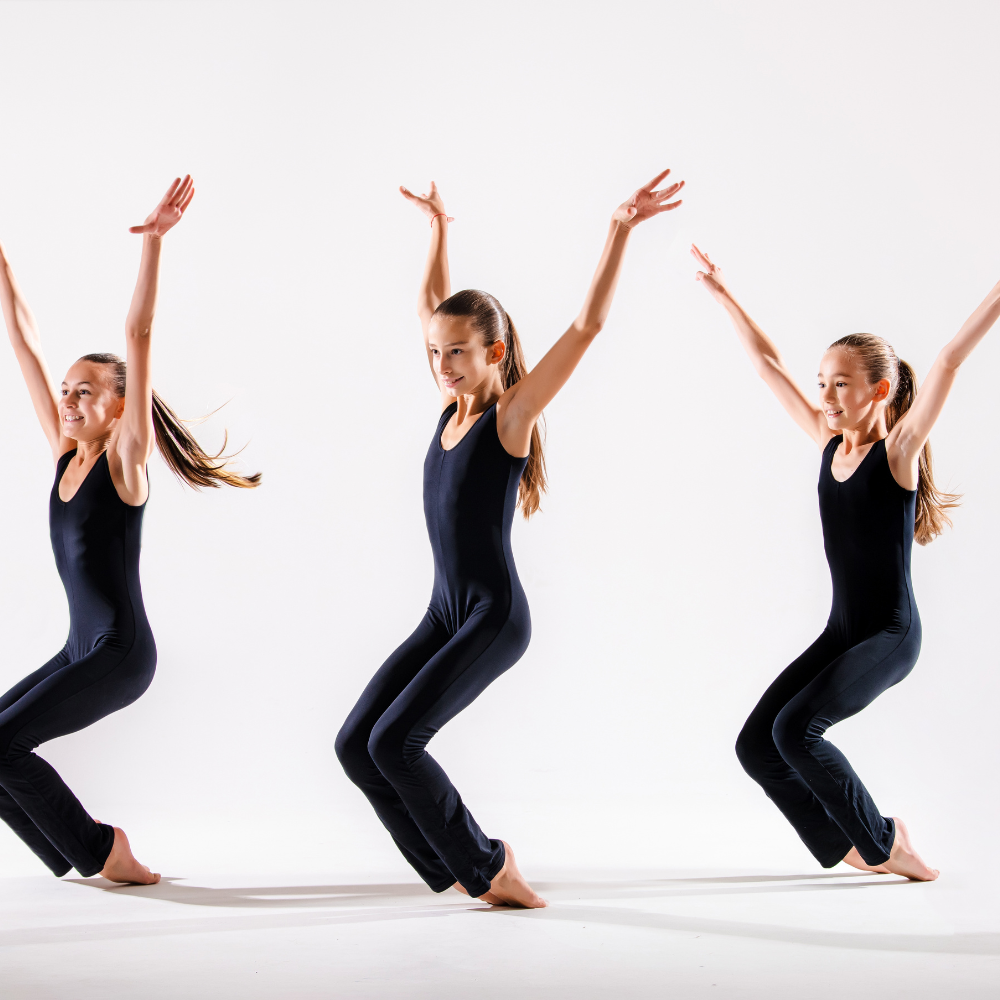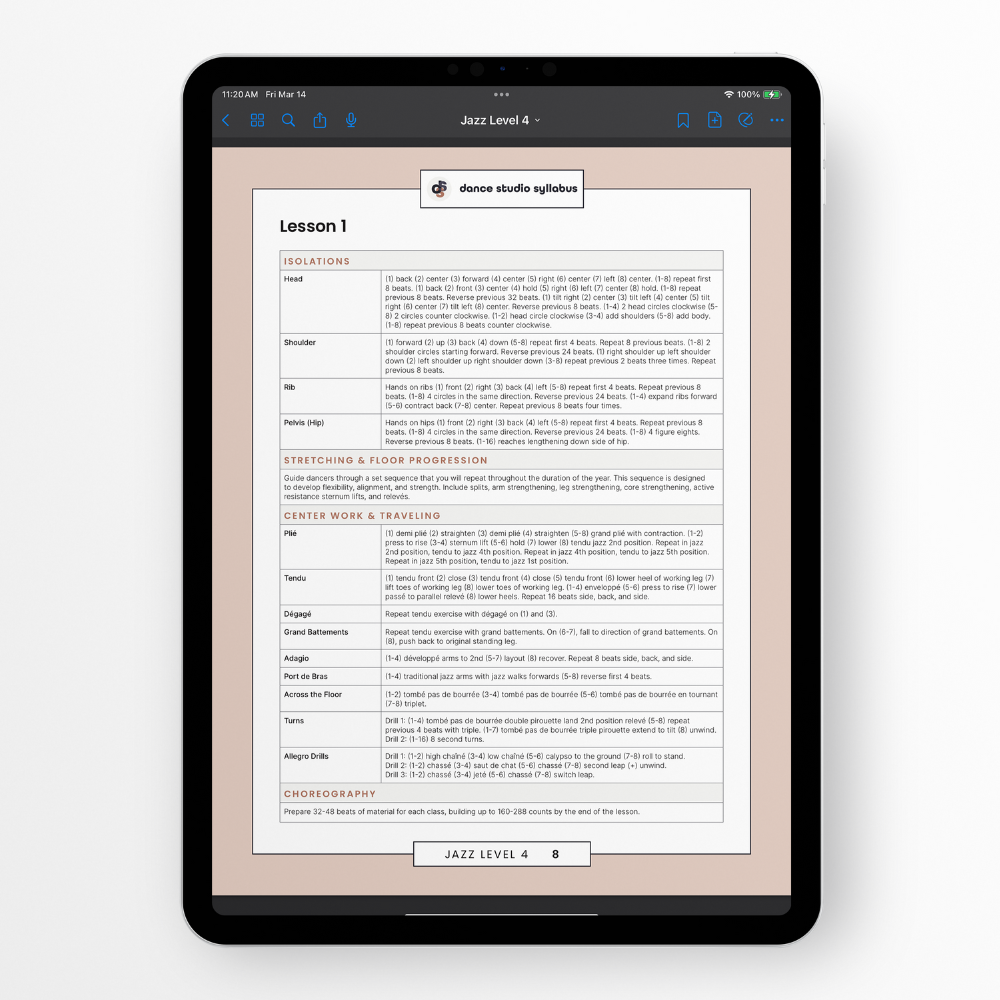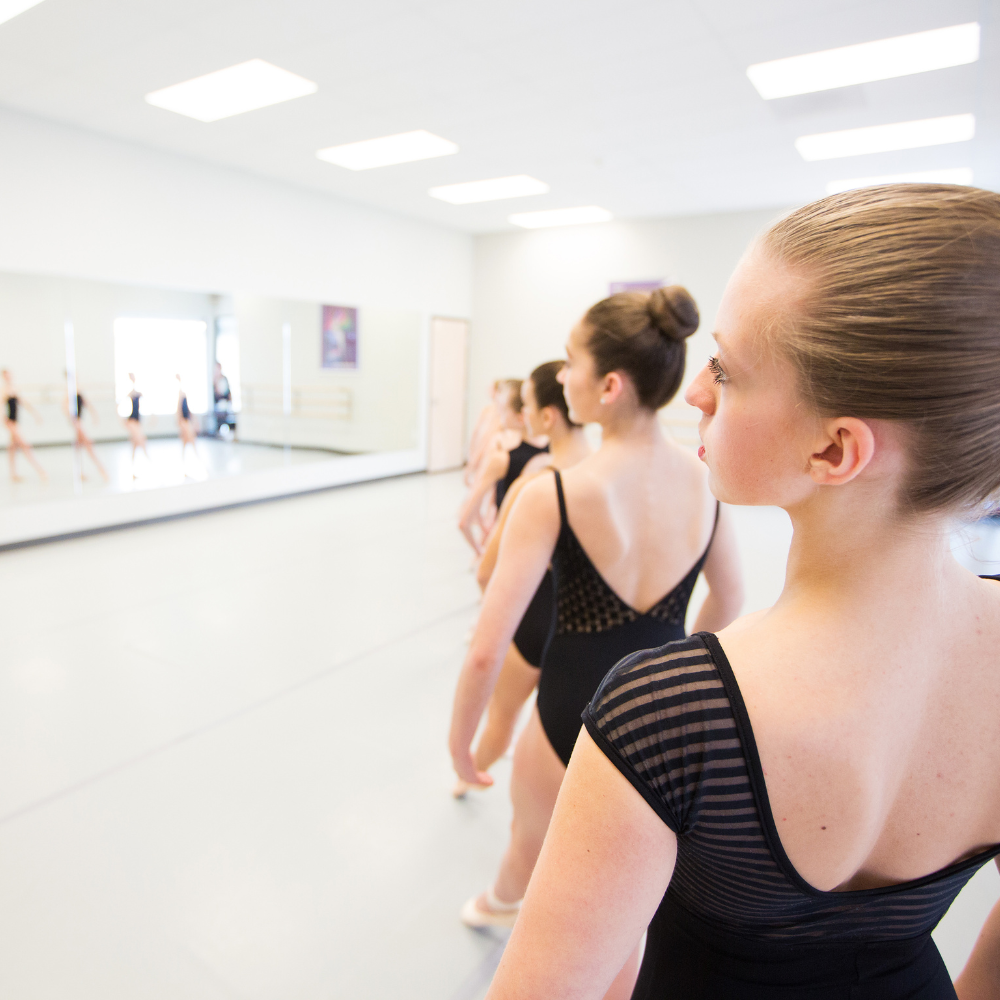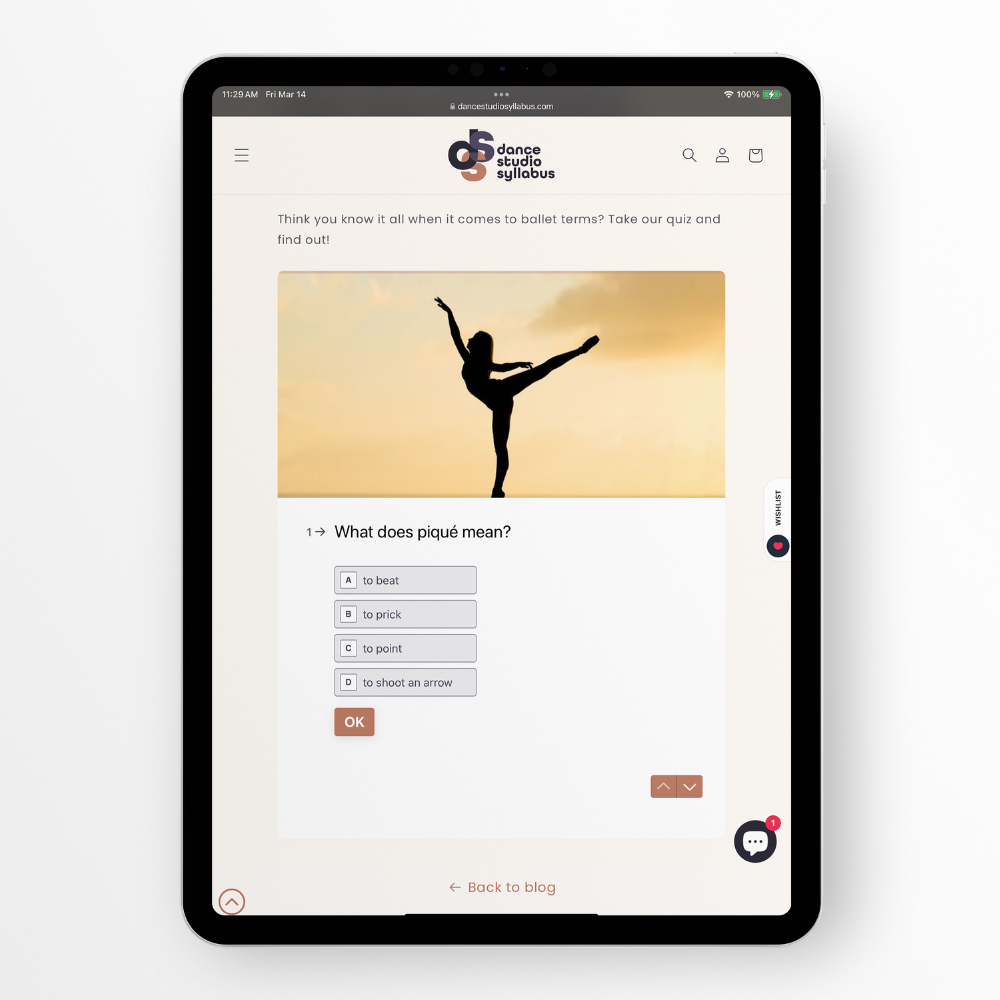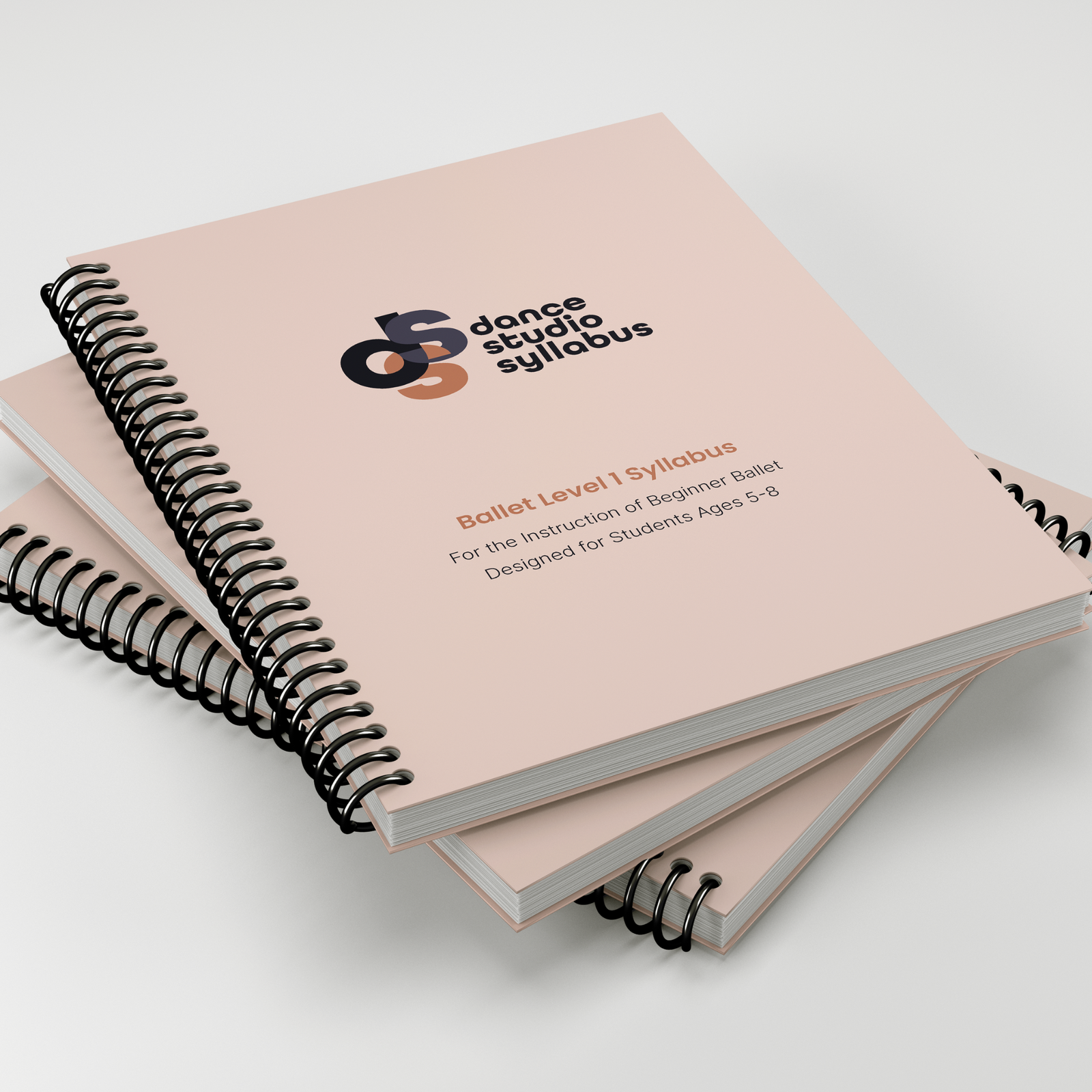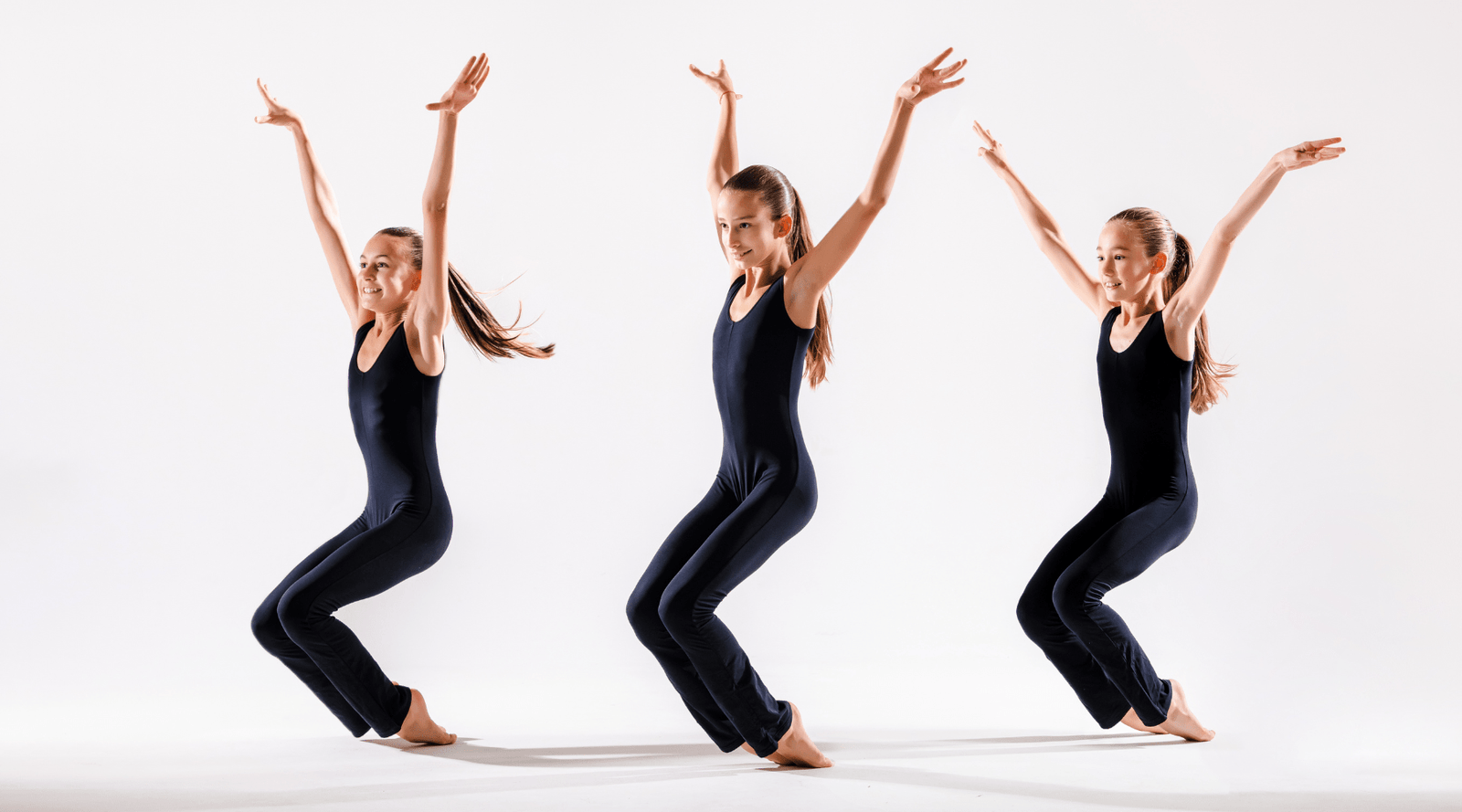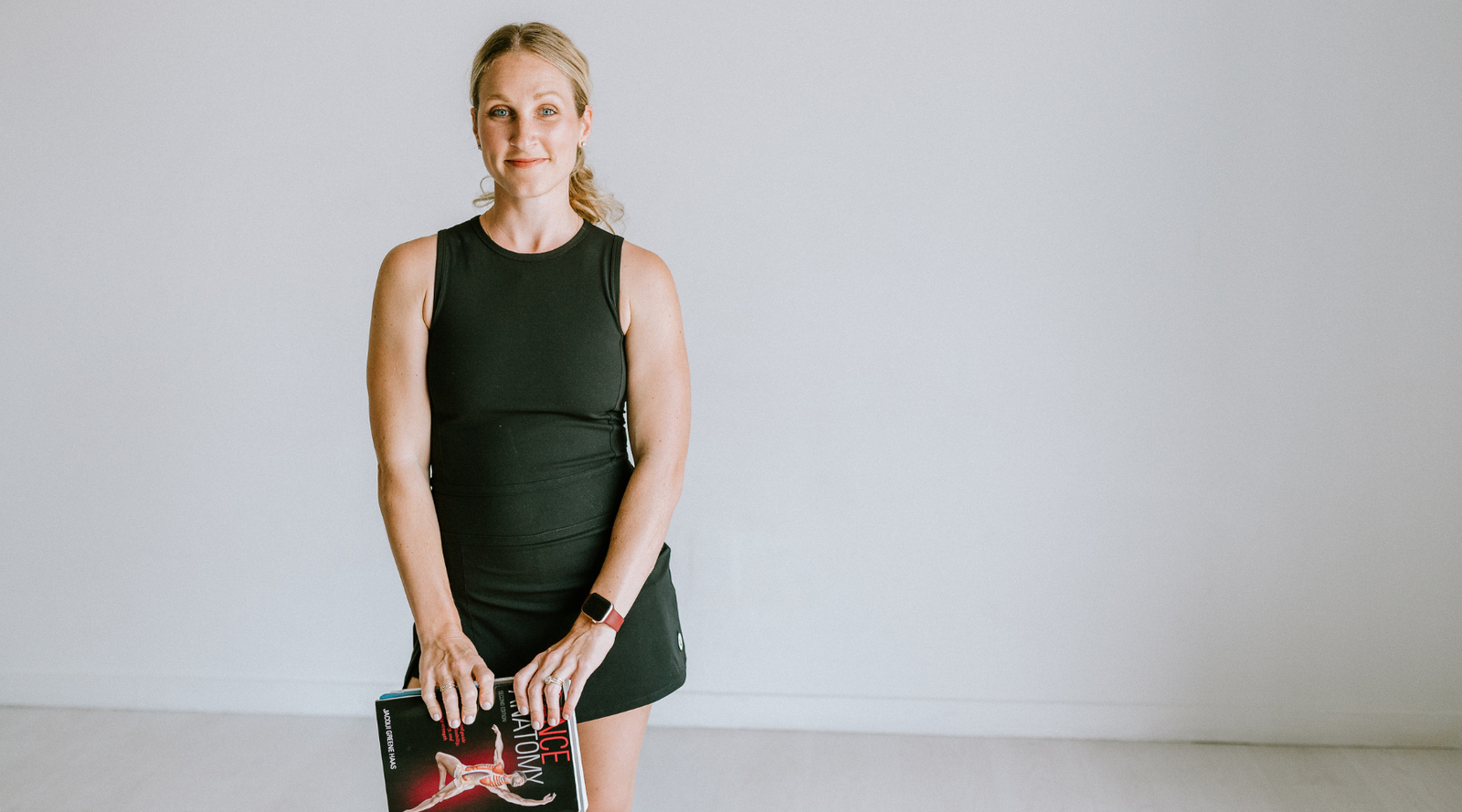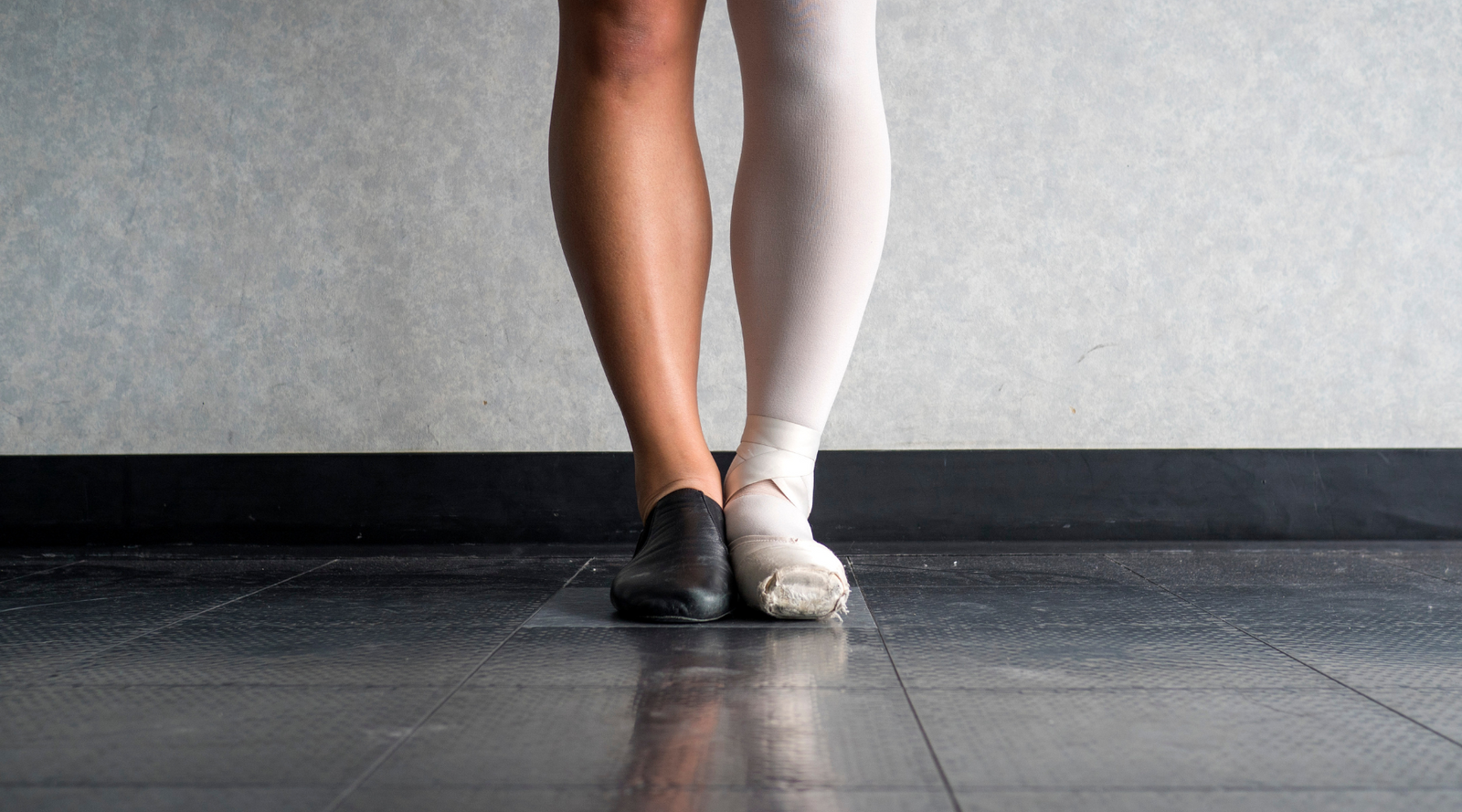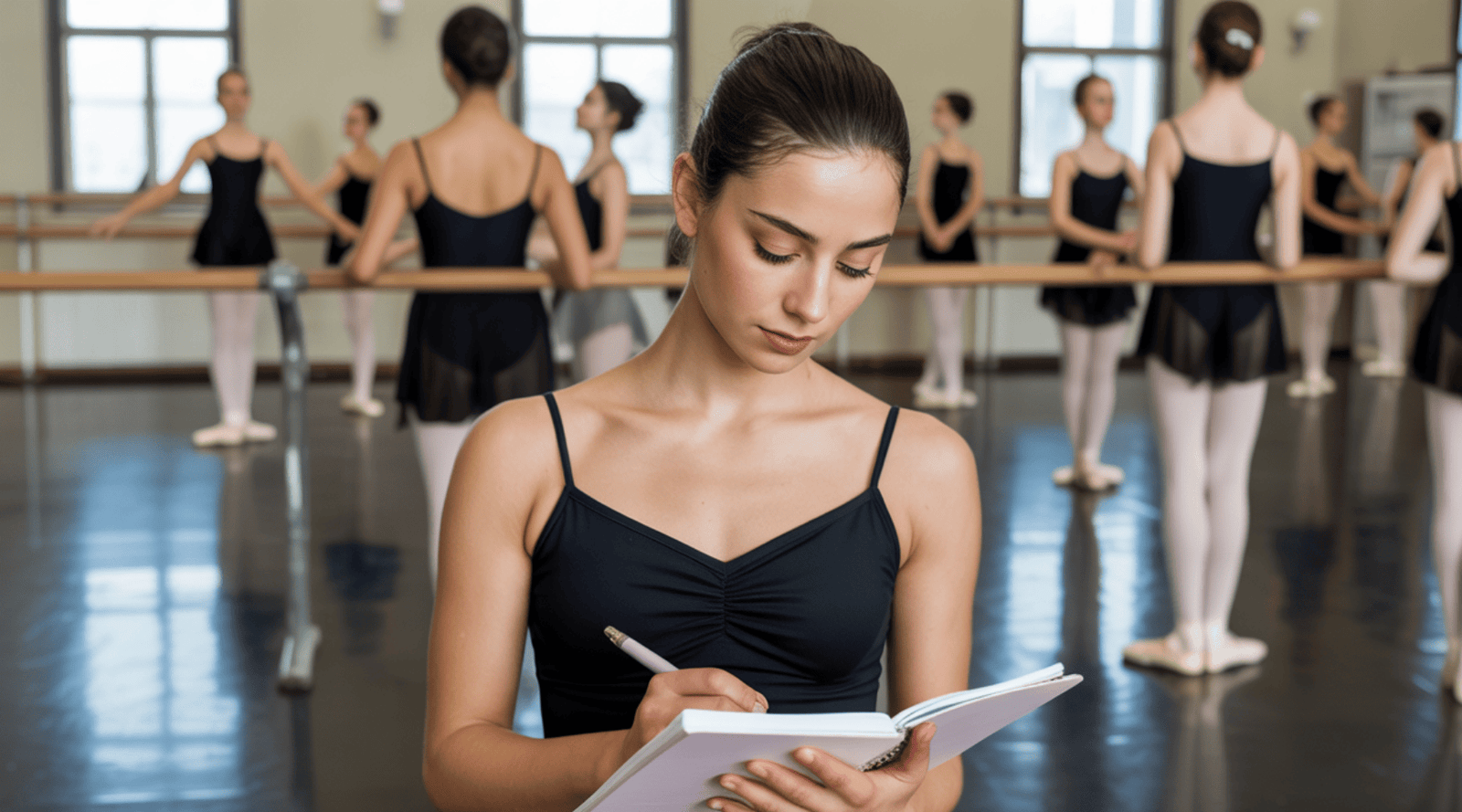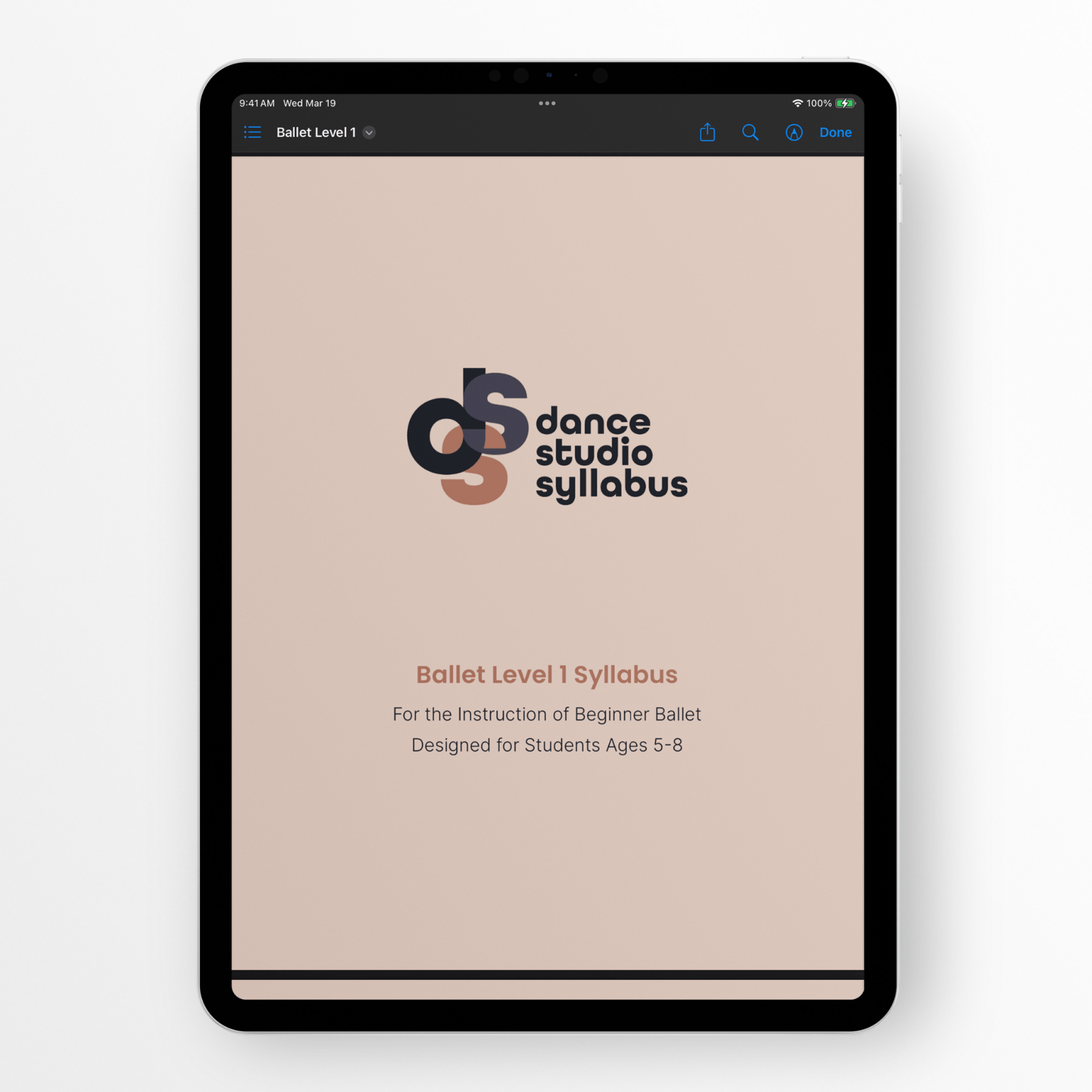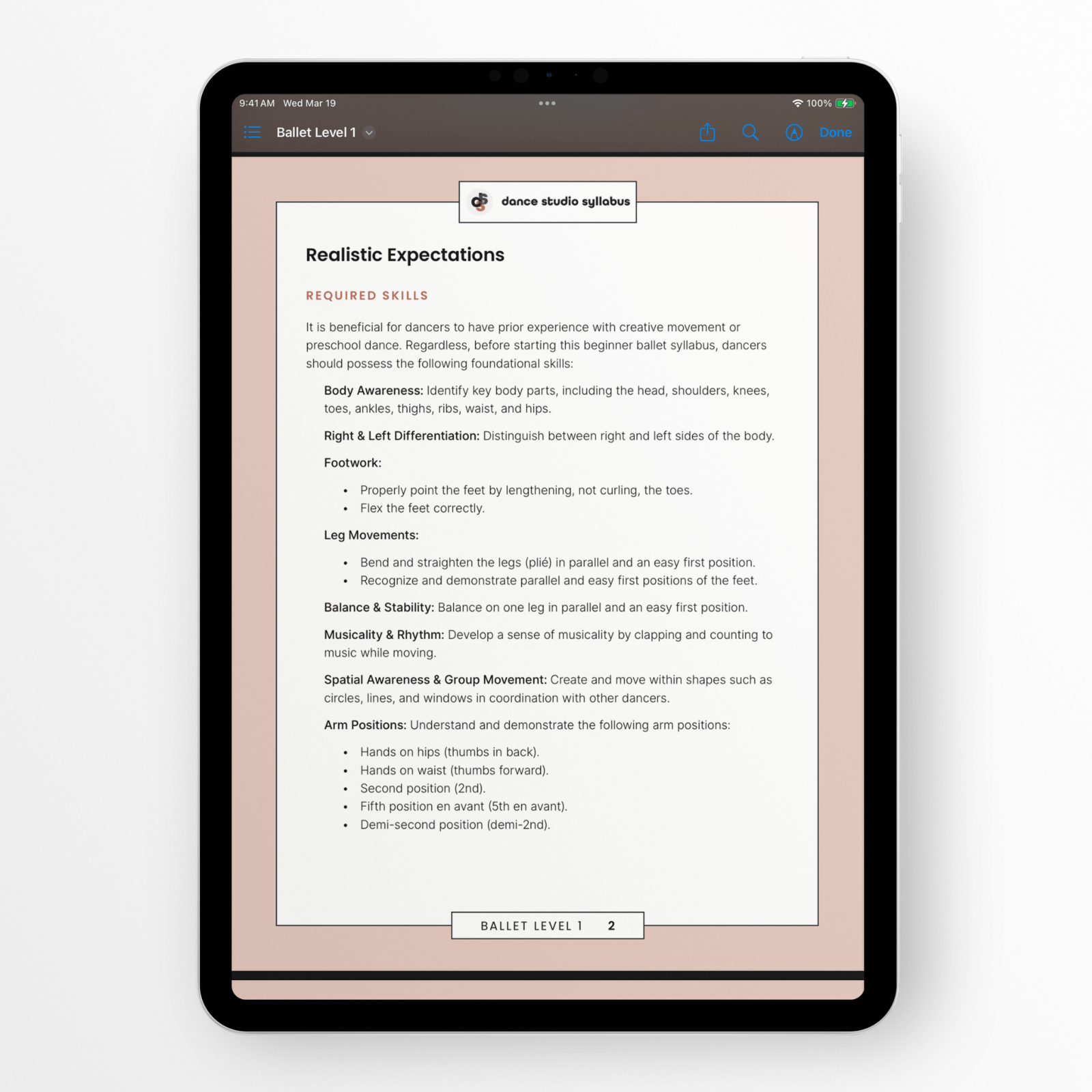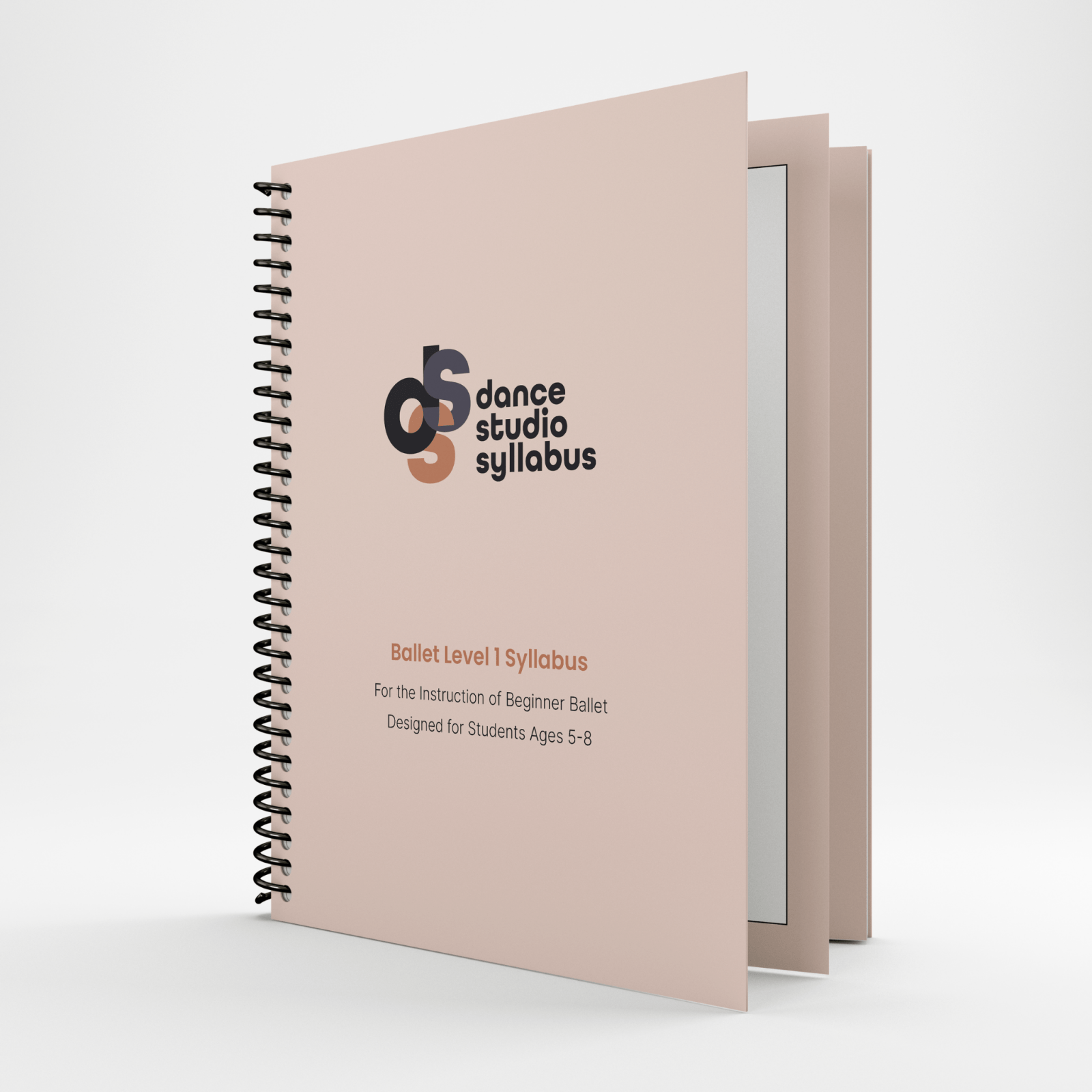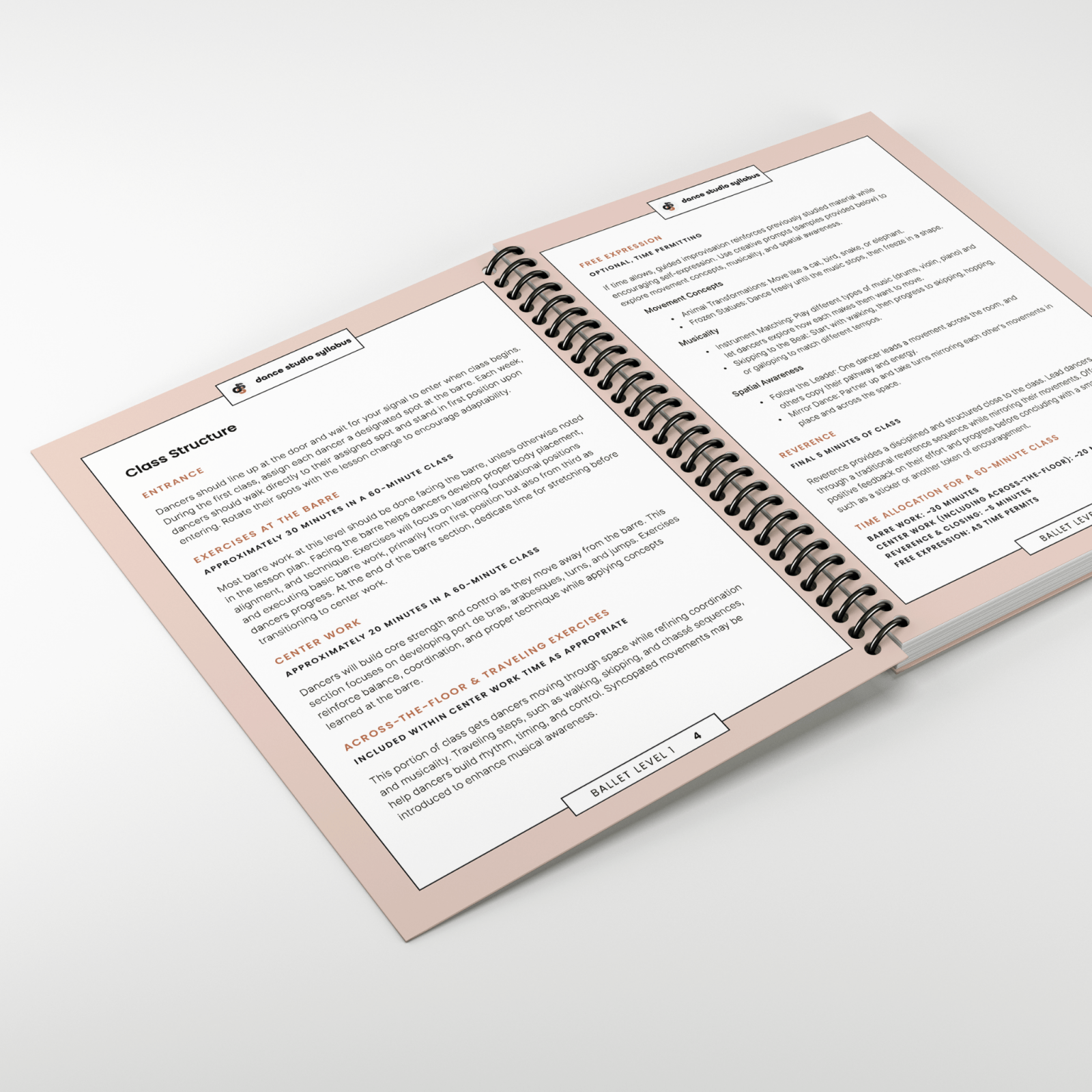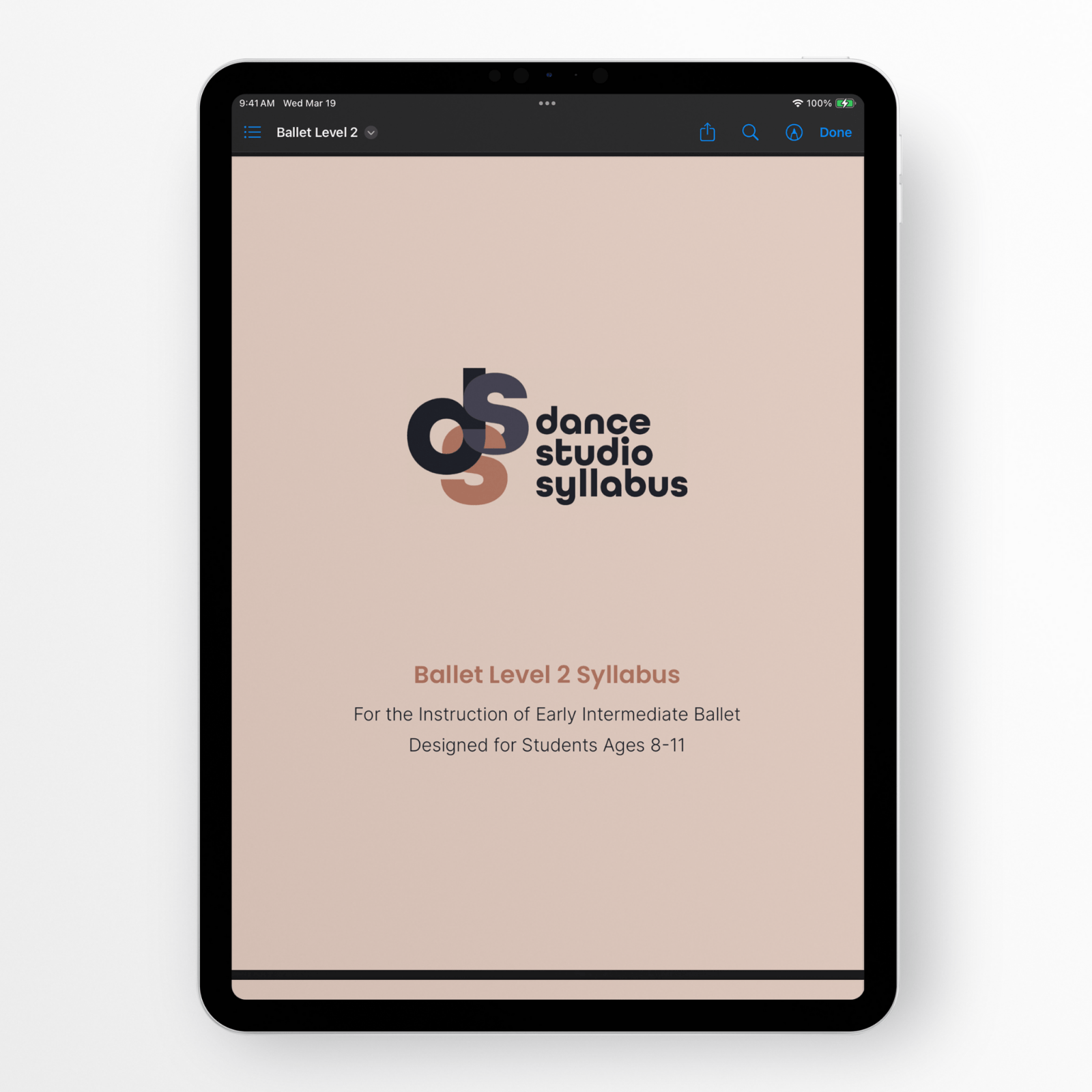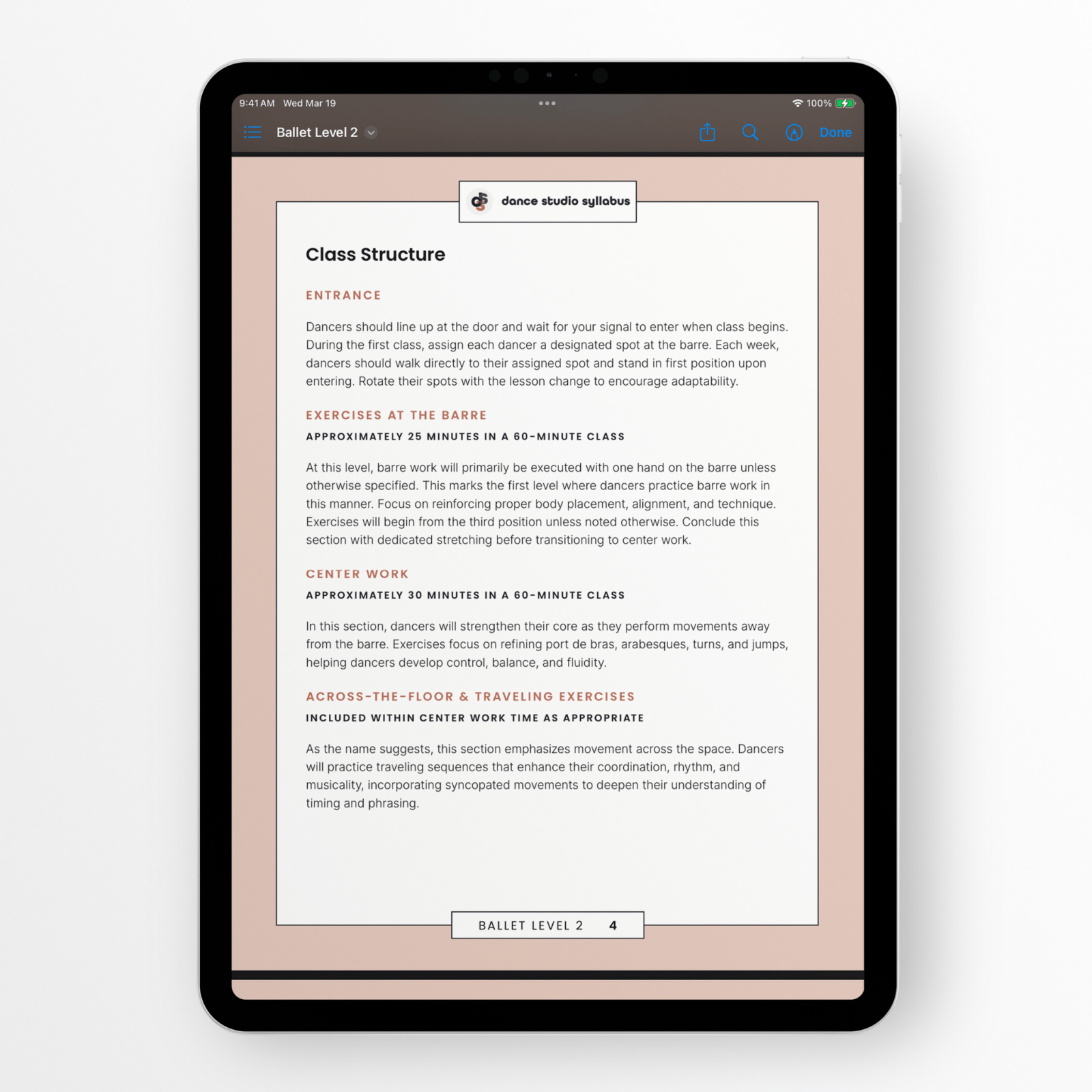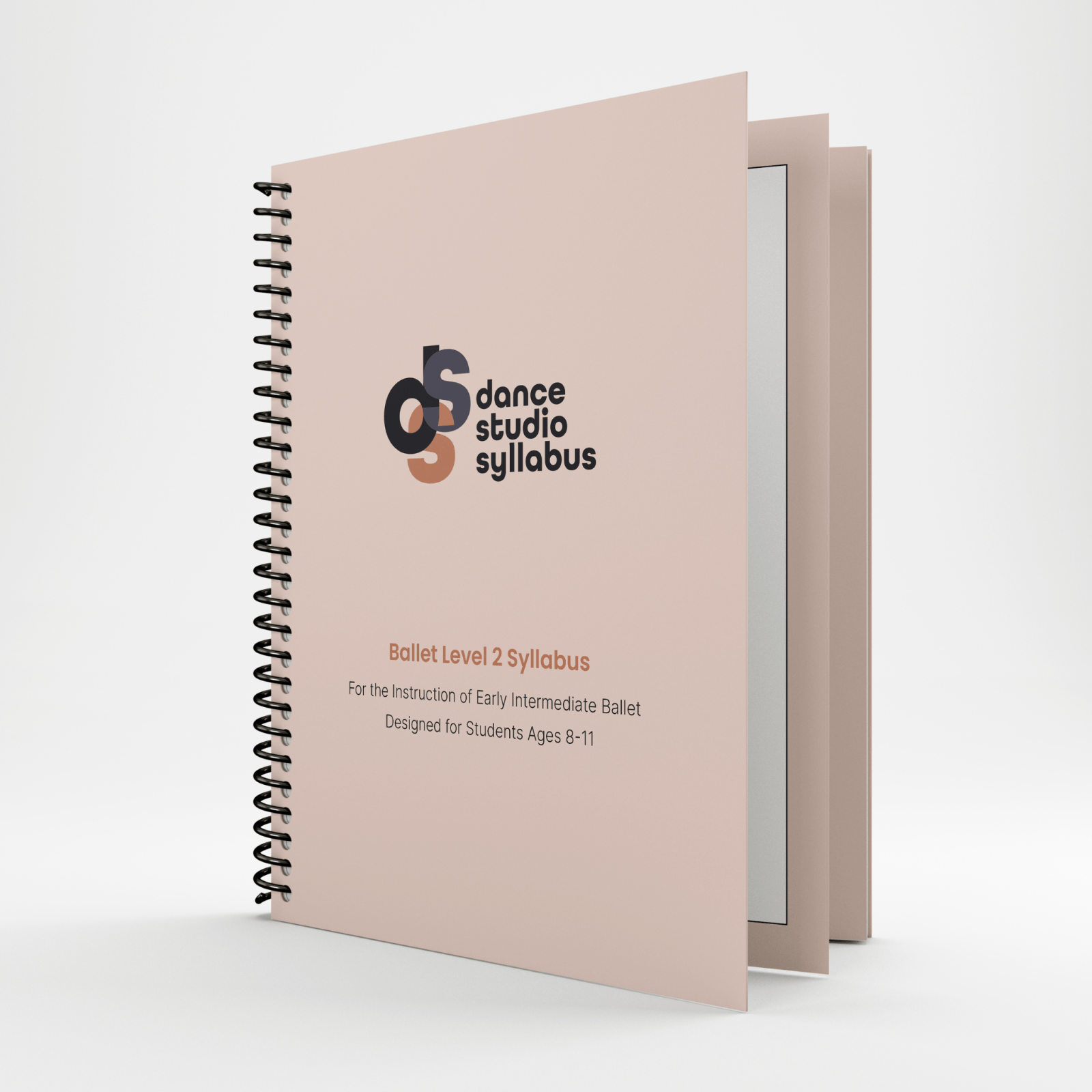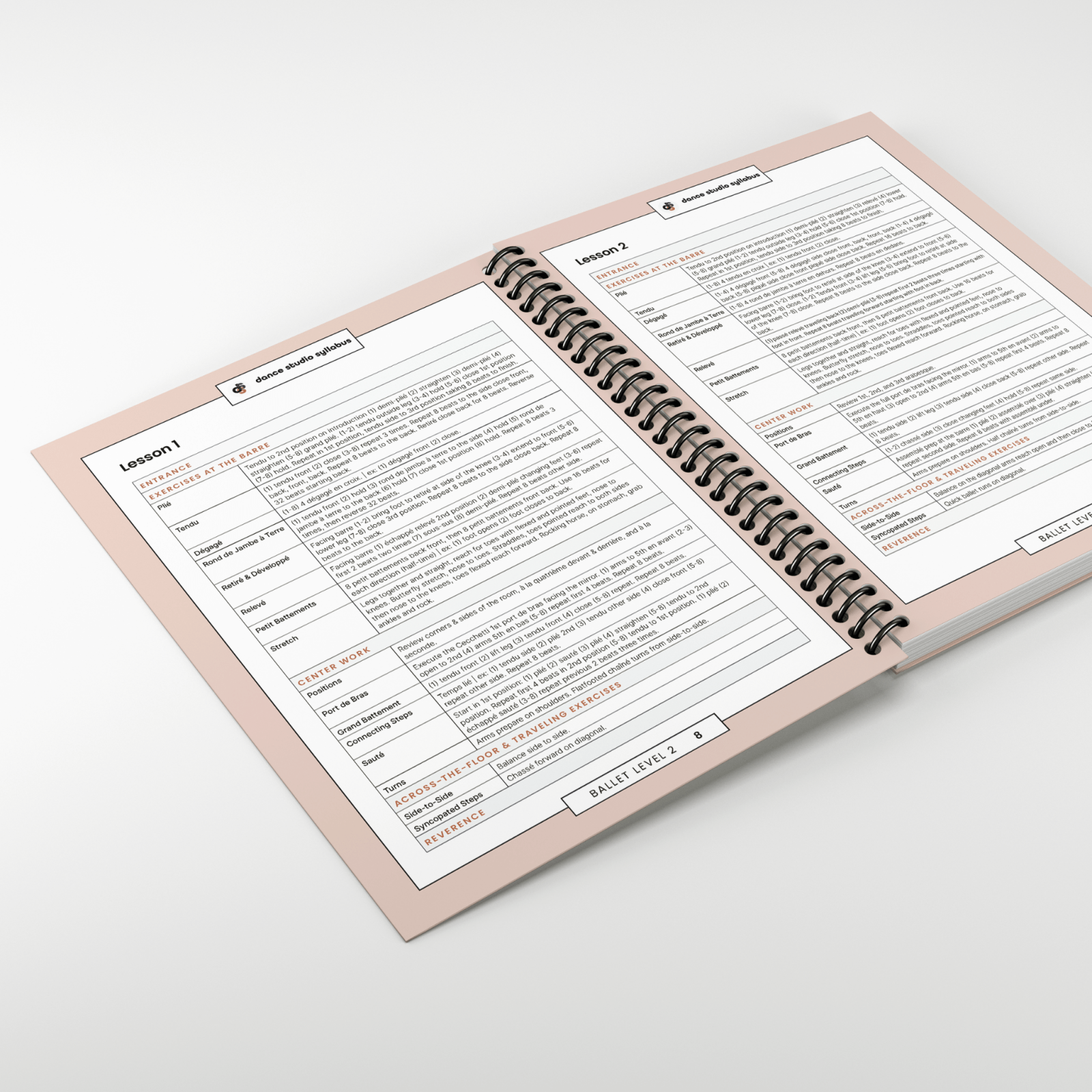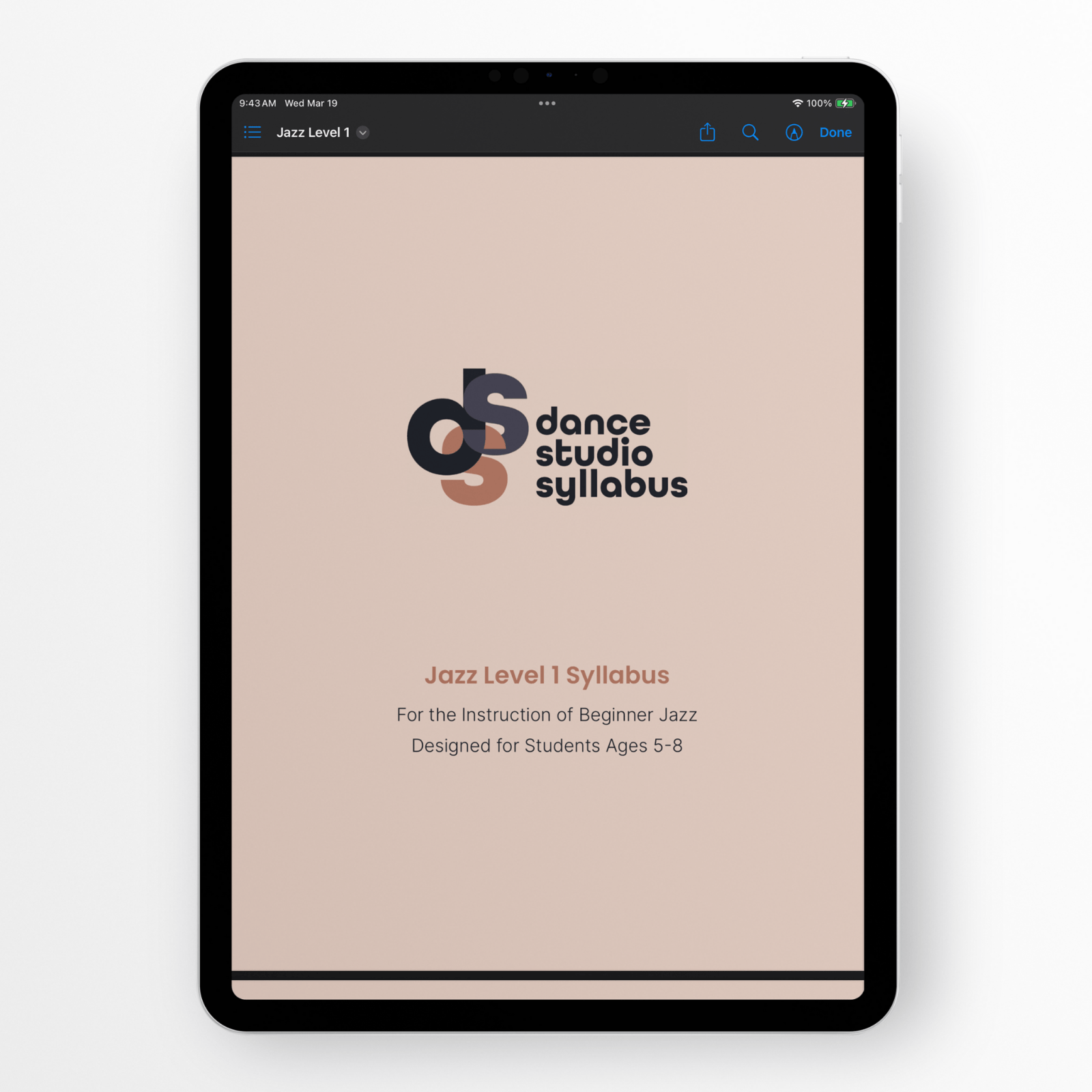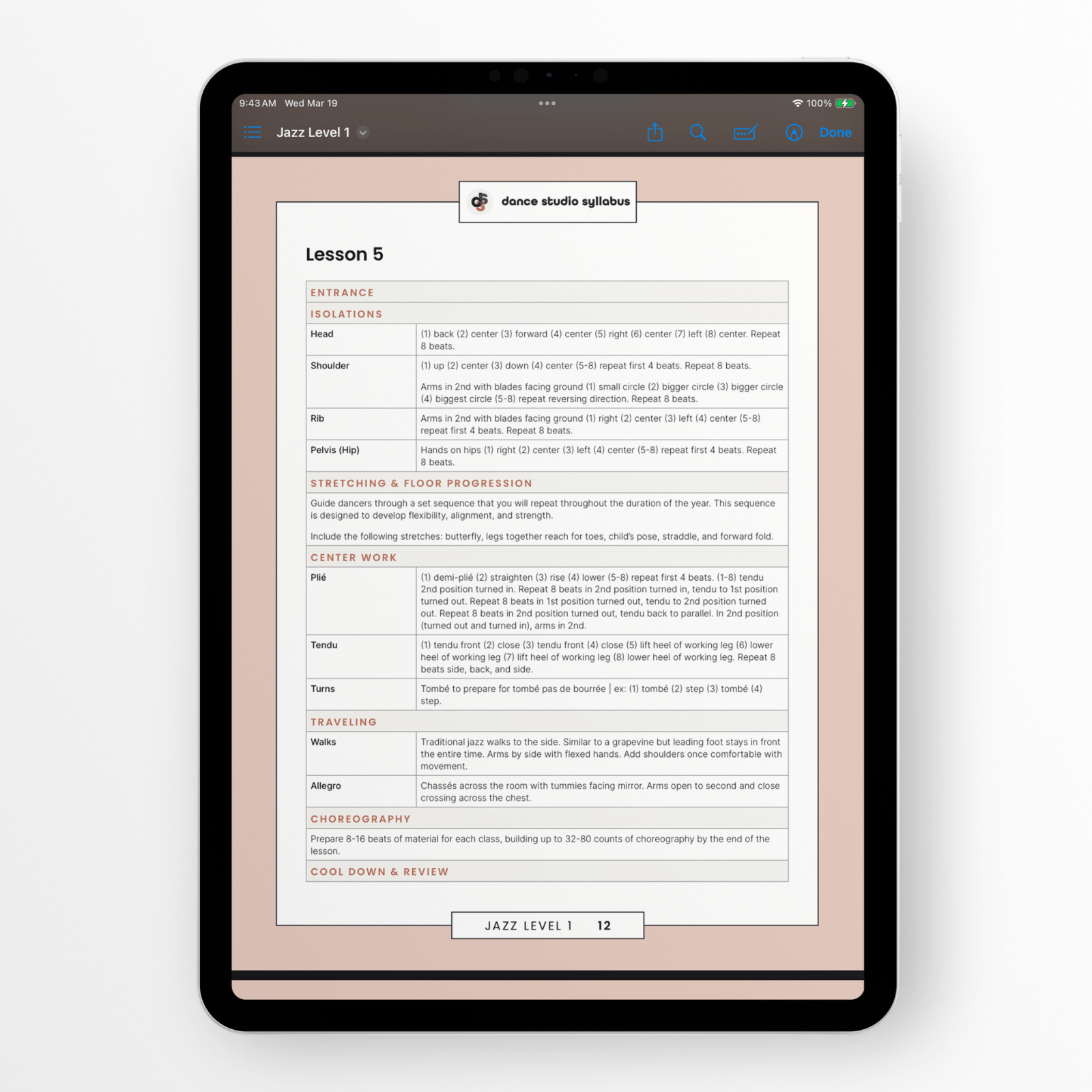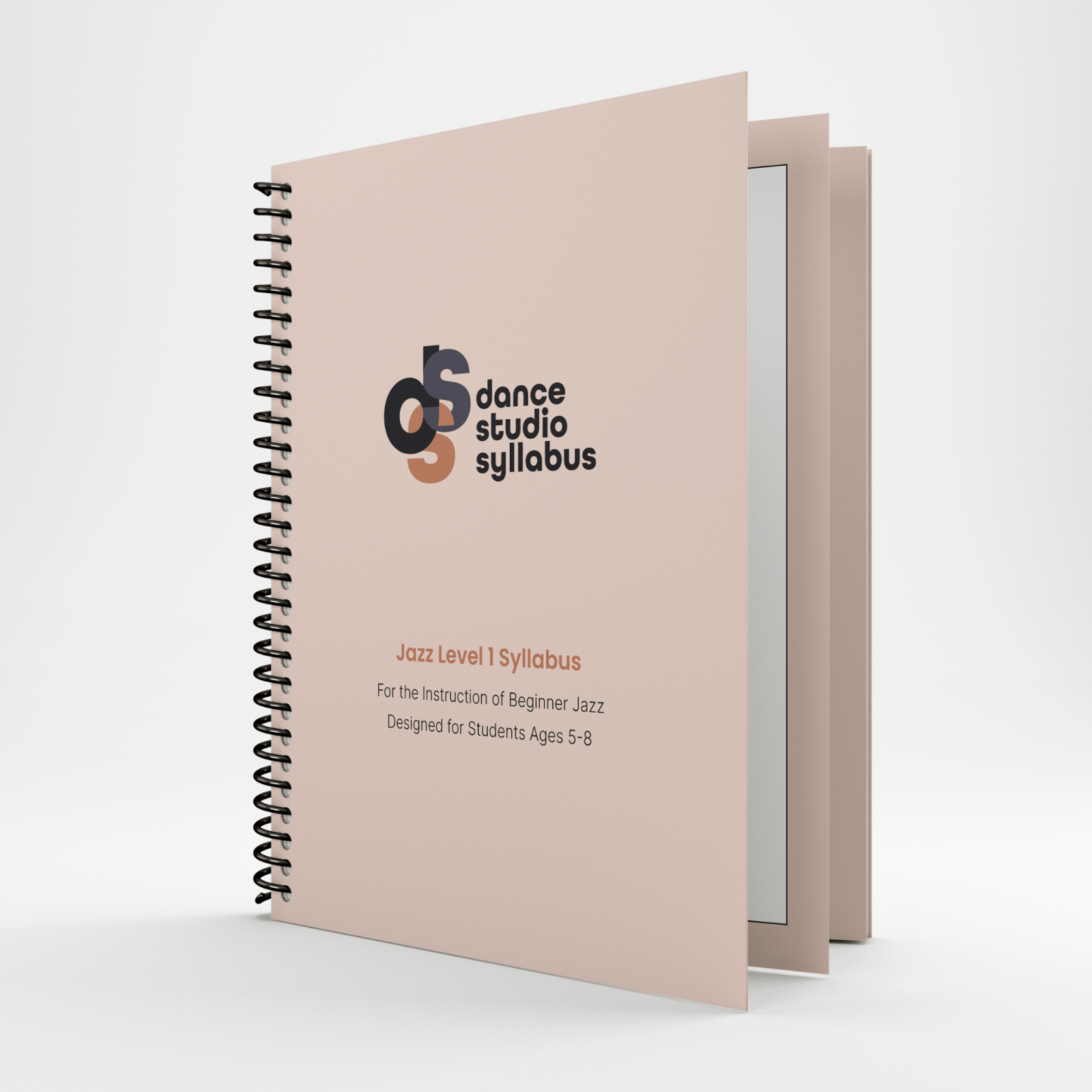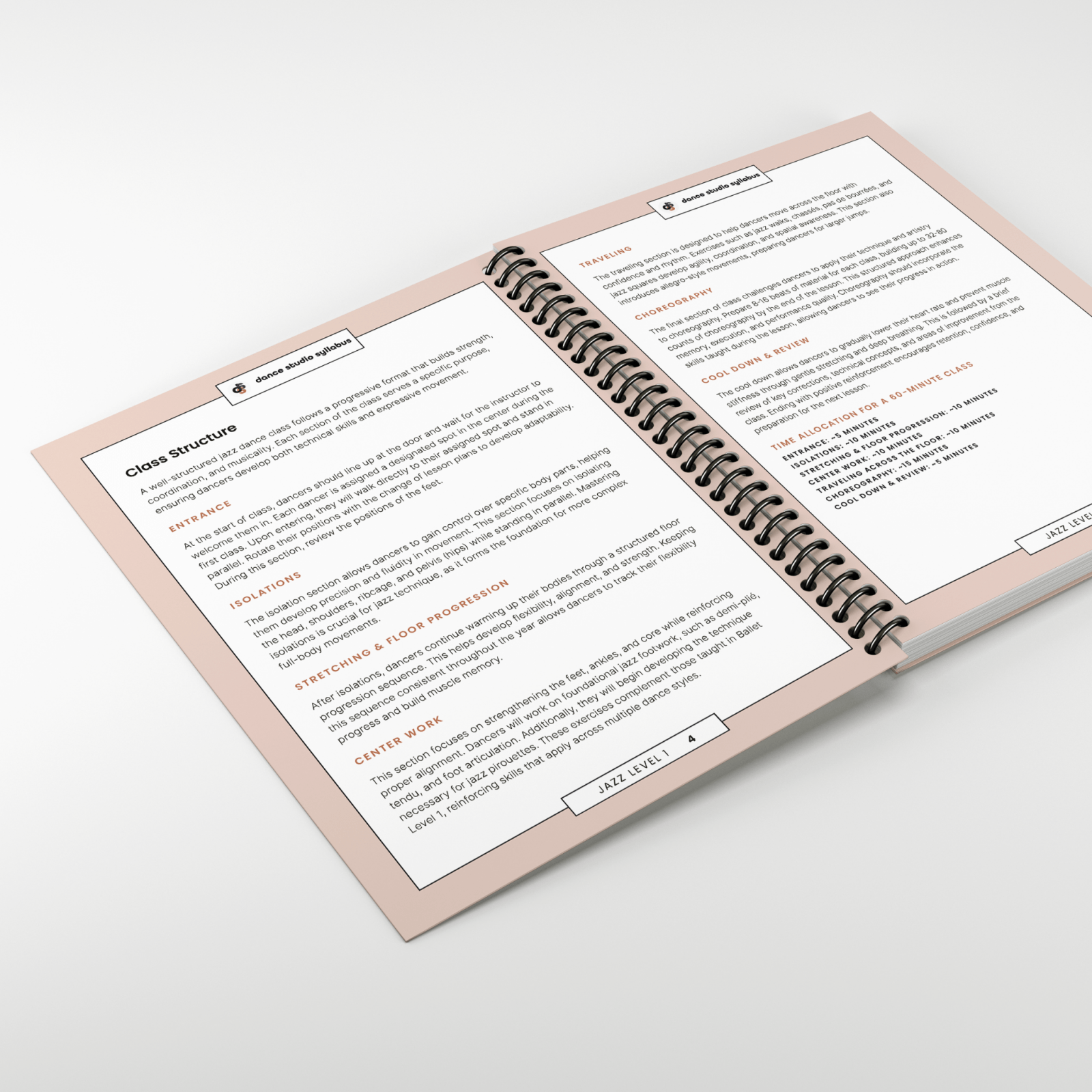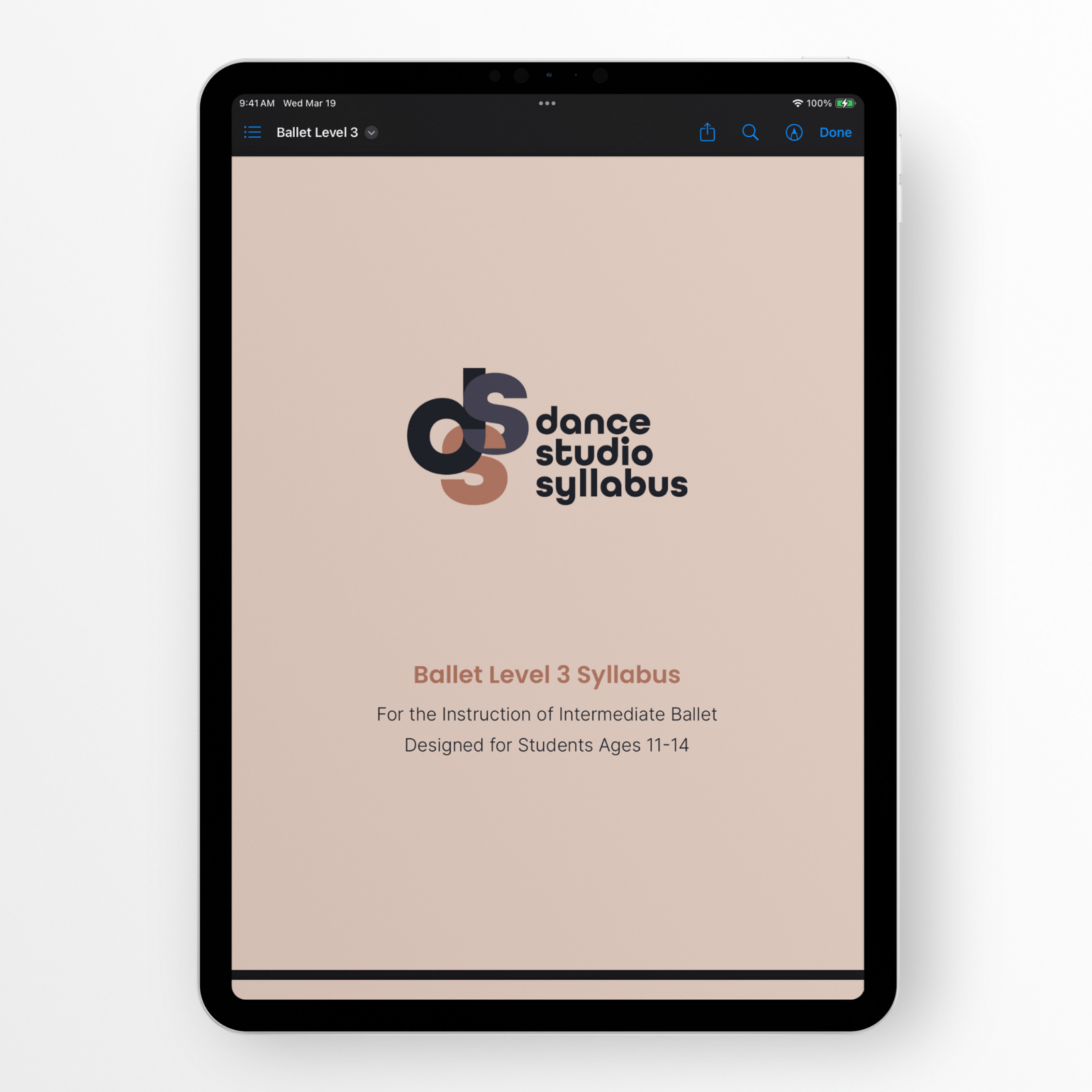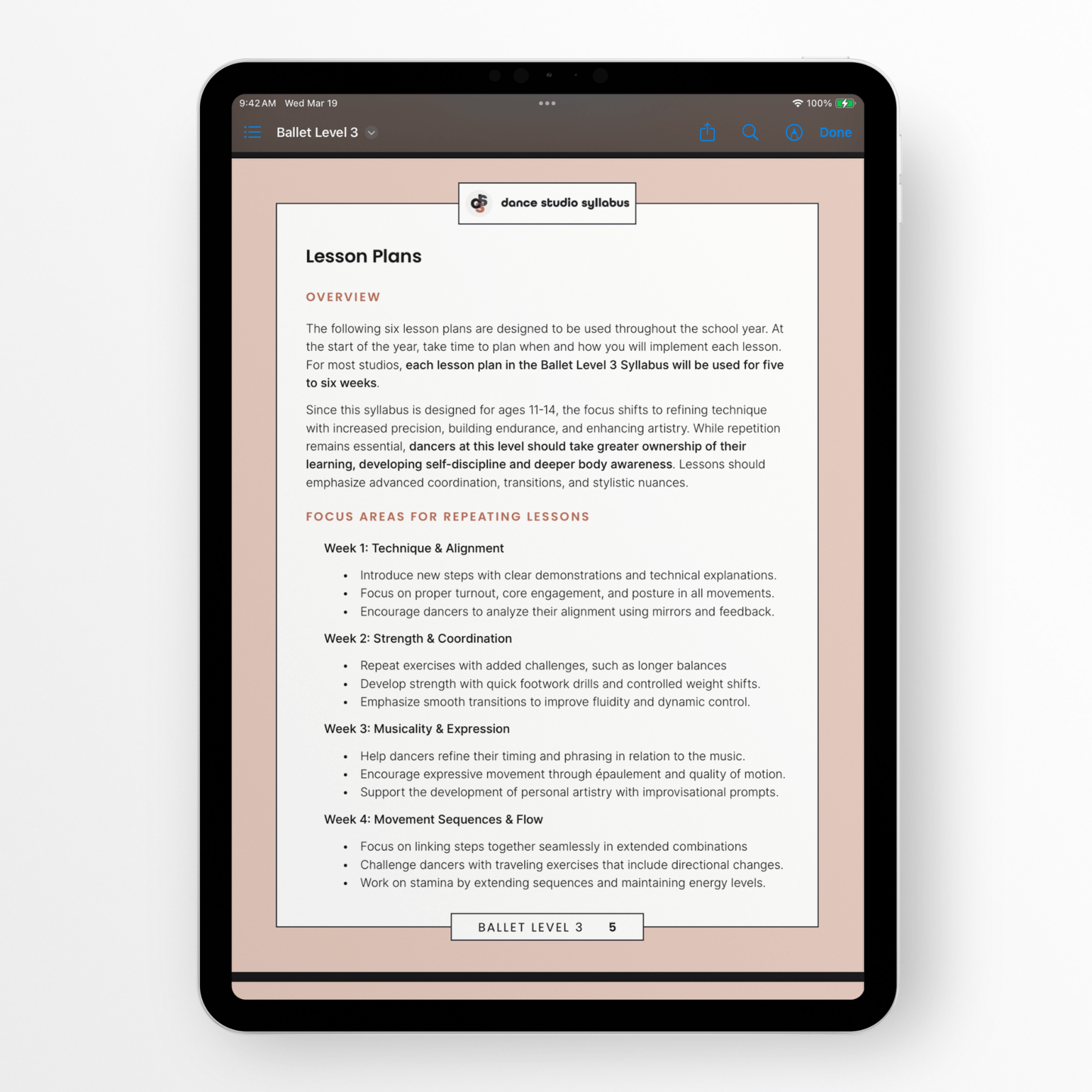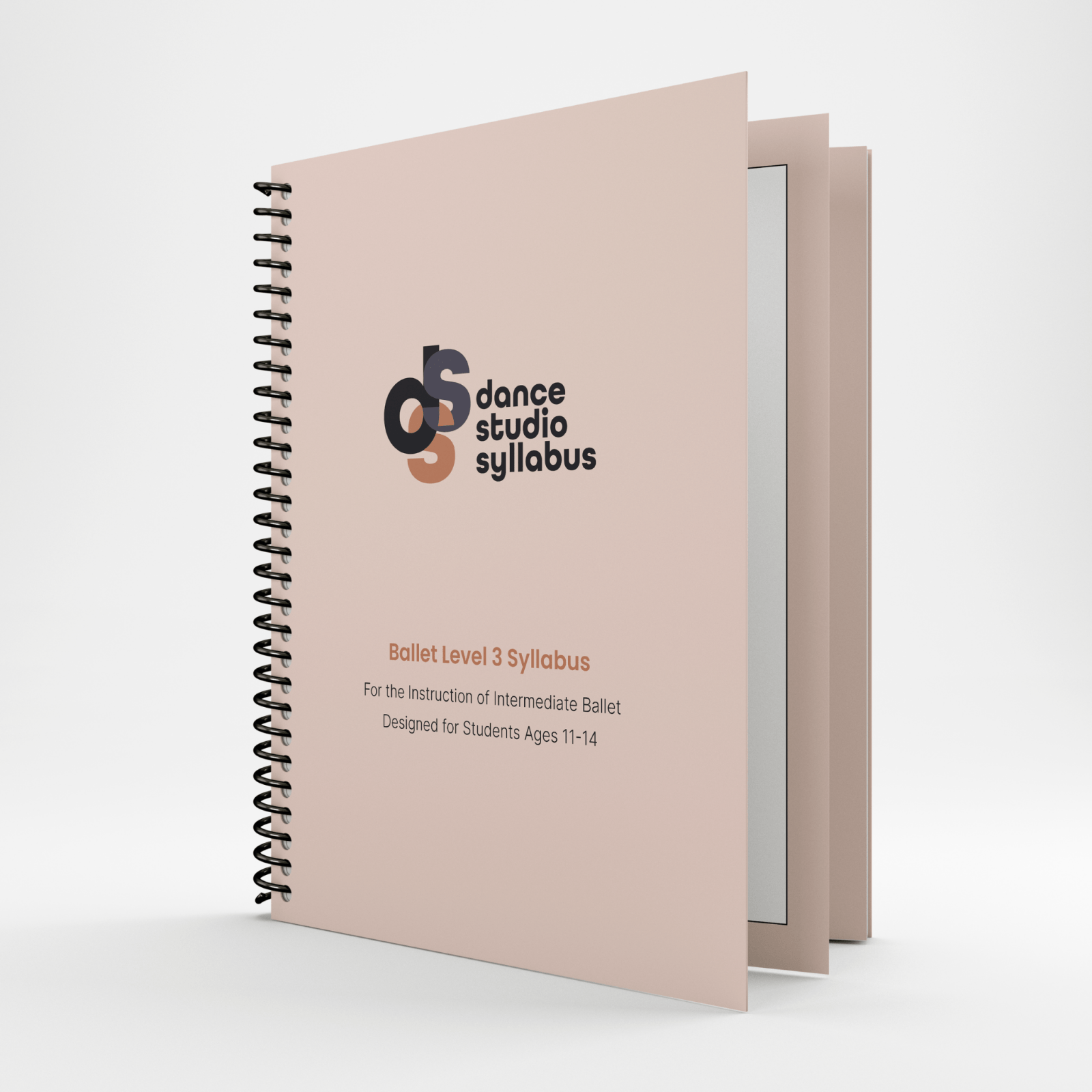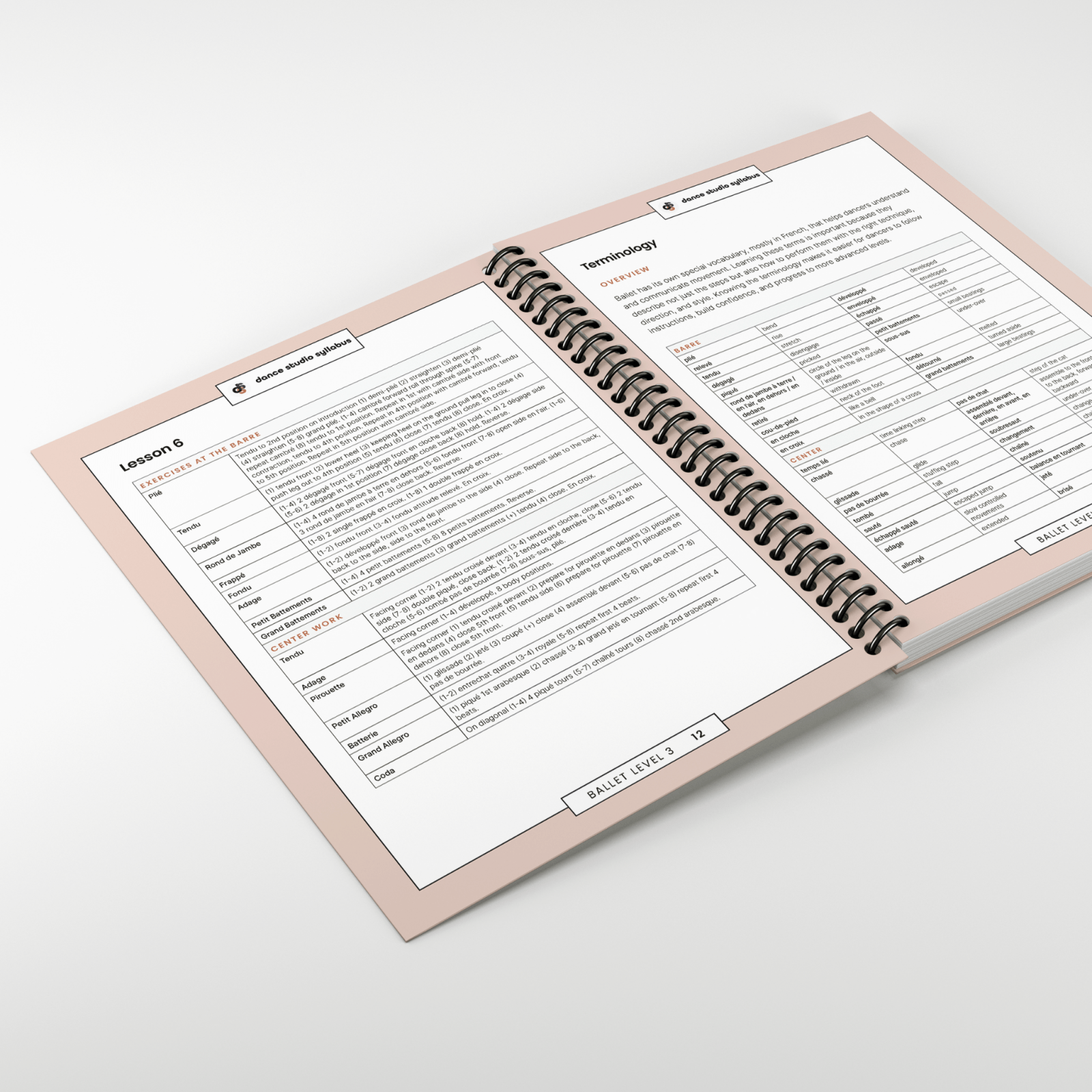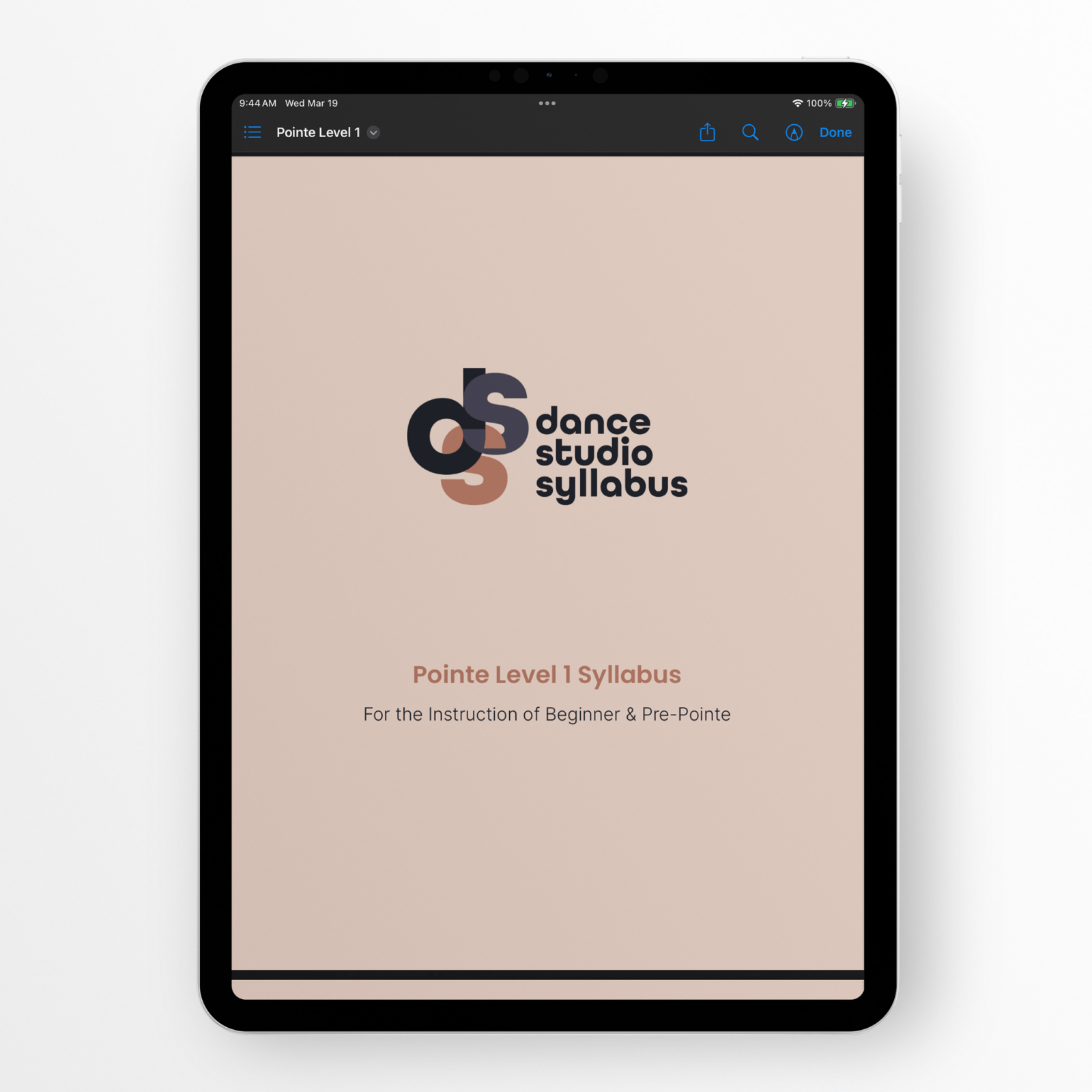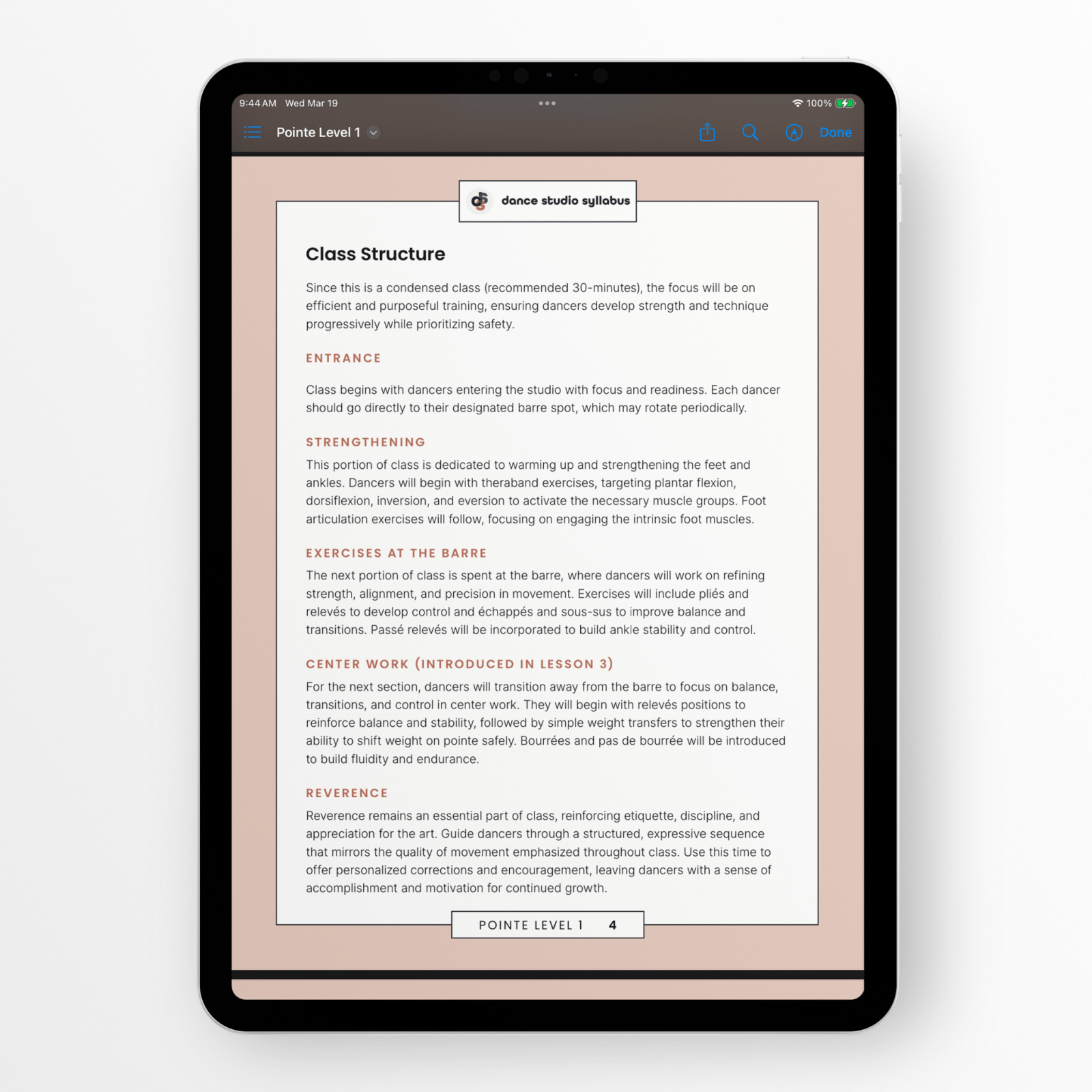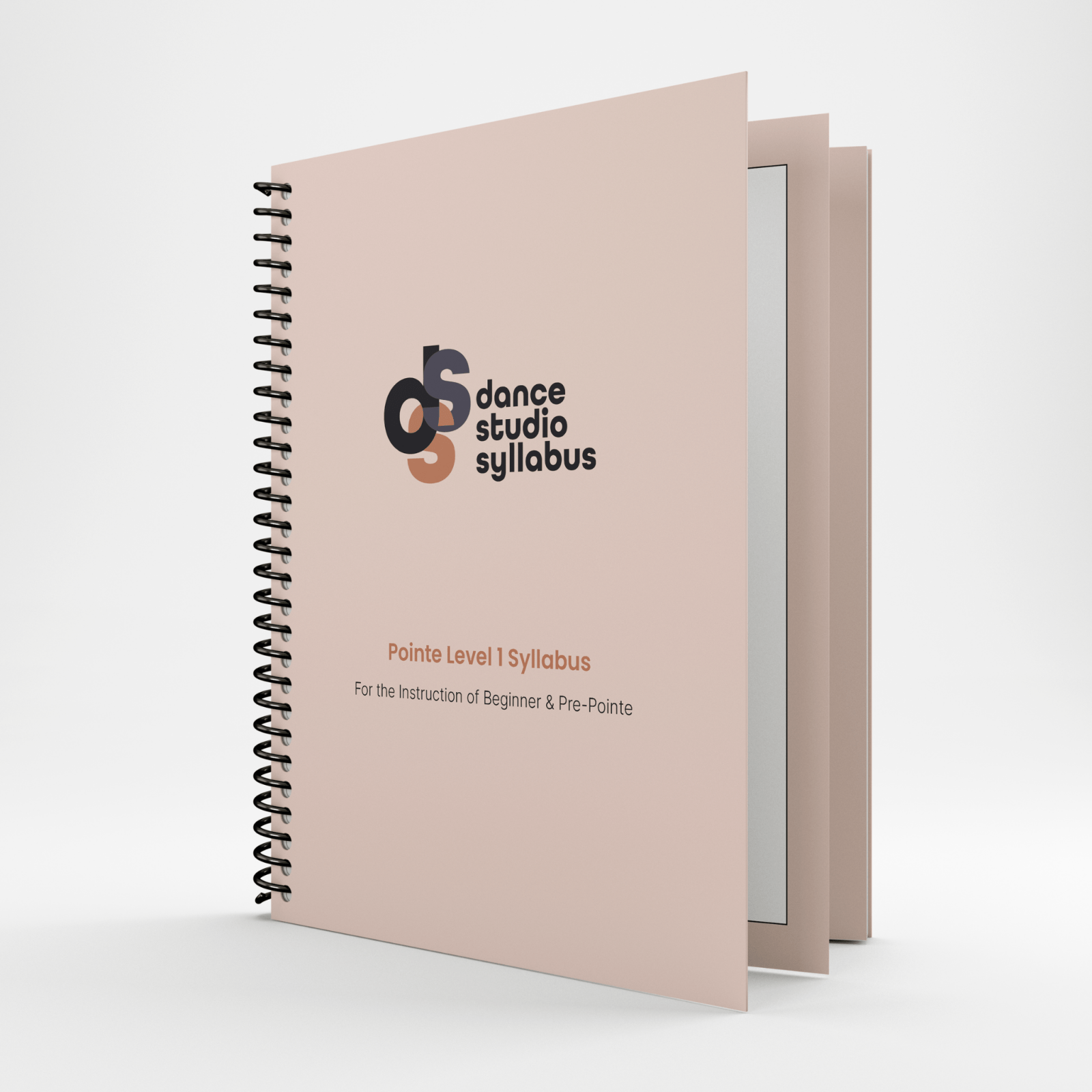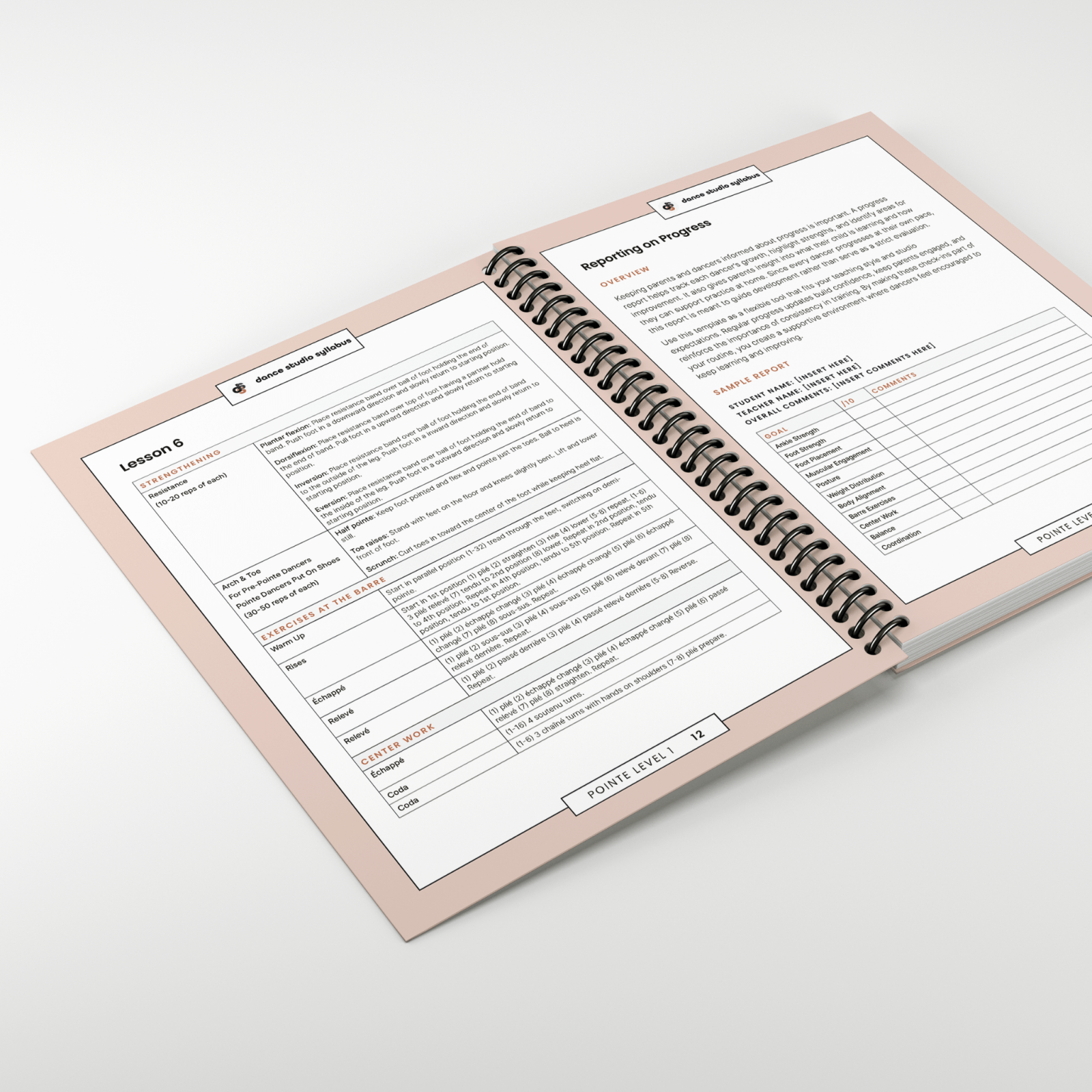The Key to Organized Dance Education: How to Structure Your Studio's Teaching Approach for Maximum Impact
For dance educators, having a structured teaching plan is essential for student success and studio growth. Terms like curriculum and syllabus often get used interchangeably, but they have distinct purposes in dance education. Together, they form a cohesive system that supports long-term student development and ensures consistency in teaching.
In this blog, we’ll cover:
- The difference between a dance curriculum and a syllabus.
- The role of lesson plans in connecting these tools.
- How to use syllabus materials effectively without implementing a full curriculum.
Whether you’re a studio owner, an instructor, or just curious about dance education, this guide will help you build a more organized and effective teaching approach.
Dance Curriculum vs. Dance Syllabus vs. Lesson Plans
Dance Curriculum: The Big Picture
A dance curriculum is the overarching educational framework for your studio. It sets the long-term vision for what students will learn and how they’ll progress over time.
Scope: A dance curriculum spans the entire program or studio, covering all styles, levels, and age groups. It’s the foundation upon which all teaching is built.
Contents: A dance curriculum includes–
- All dance syllabi for different classes and levels.
- Clear objectives for skill progression and knowledge development.
- A roadmap for how students will grow, from beginner to advanced levels
Role of Lesson Plans: A dance curriculum informs long-term goals, which shape the shorter-term goals focused on in each dance syllabi, which shape the focus of individual dance class lesson plans. This is the framework we used to develop all of our materials at Dance Studio Syllabus.
Think of a dance curriculum as your studio’s educational blueprint—similar to a school’s course catalog but tailored to dance education.
Dance Syllabus: The Course Guide
A dance syllabus is a focused plan for a specific class or level. It provides a detailed breakdown of what students will learn over a dedicated period of time.
Scope: A dance syllabus narrows its focus to a single course, such as beginner jazz or intermediate ballet.
Contents: A dance syllabus contains–
- Learning objectives for the specific level.
- Techniques, skills, and concepts to be taught.
- Specific exercises and combinations for instruction.
- Clear benchmarks for evaluating progress.
Role of Lesson Plans: A dance syllabus provides a roadmap for lesson plans by specifying the topics and skills to teach. In the case of Dance Studio Syllabus, we go one step further and include all of the lesson plans you need to teach those skills.
A dance syllabus ensures that all instructors teaching within a curriculum stay consistent and acts like a guidebook for each course.
Dance Lesson Plans: The Class Blueprint
Lesson plans bring a dance syllabus to life in the classroom. They outline the specific exercises that will be done in order to achieve the learning objectives established for a specific level.
Scope: At Dance Studio Syllabus, our lesson plans are designed to be repeated for four to five weeks, based on your dance studio's calendar. This approach reinforces learning, develops muscle memory, builds strength and coordination, refines technique, and encourages artistic growth.
Contents: A dance lesson plan includes–
- Specific exercises and combinations to complete a dance class.
- Timing and order of each class section (e.g., warm-up, barre, center)
Lesson plans provide structure for dance educators and ensure every dance class contributes to broader studio goals.
| Feature | Curriculum | Syllabus | Lesson Plans |
| Scope | Studio-wide (all classes/levels) | Individual level | Specific classes |
| Purpose | Overall structure and goals | Dedicated learning objectives | Plan for teaching syllabus content |
| Focus | Big-picture progression | Step-by-step growth | Week-to-week teaching |
| Example | Ballet Program for Ages 5-18 | Beginner Ballet (Ages 5-8) | Beginner Ballet: Lesson 1 |
Using Dance Syllabus Materials Without a Full Dance Curriculum
Implementing a complete curriculum can feel overwhelming, especially for smaller studios or those just starting out. Here’s how you can use syllabus materials effectively without a full curriculum:
- Start with Specific Classes: Use syllabus materials for beginner or foundational classes where consistency is critical.
- Align Syllabus with Studio Goals: Choose syllabus content that reflects your studio’s mission and values, such as focusing on technique or creative expression.
- Customize for Flexibility: While a syllabus offers structure, adapt exercises or goals based on your students’ needs and interests.
- Evaluate and Iterate: Use syllabus materials as a pilot program. Gather feedback from instructors and students, and adjust before committing to a broader curriculum.
Benefits of Using Both in a Dance Studio
Combining a curriculum and syllabus ensures a structured, consistent learning experience for students while supporting dance educators.
1. Enhanced Student Progression:
- A curriculum ensures students are exposed to a variety of techniques and concepts over time.
- A syllabus provides the shorter-term objectives to achieve those long-term goals.
2. Consistency Across Instructors:
- A well-defined curriculum ensures all instructors follow the same vision.
- The syllabus offers structure, reducing variability in how lessons are delivered.
3. Improved Student Retention:
- Clear goals and progression keep students motivated and engaged.
- Parents and students appreciate transparency in what is being taught and why.
4. Flexibility in Studio Offerings:
- Curriculum allows studios to adapt their teaching to diverse student needs.
- Syllabus materials can be customized to focus on specific styles or skill levels.
Final Thoughts: A Balanced Approach to Dance Education
A dance curriculum, syllabus, and lesson plans work together to create a cohesive, consistent, and effective education system. While the curriculum provides the overarching framework, the syllabus breaks it into manageable parts, and lesson plans bring it to life in the classroom.
By understanding and utilizing these layers, dance studios can offer students a clear, engaging path for progression, fostering both technical skills and a lifelong love for dance.
For studio owners or instructors hesitant to implement a full curriculum, using syllabus materials is an excellent first step. With clear goals, flexibility, and regular evaluation, you can create an engaging and progressive learning environment that keeps students inspired and coming back for more.
Whether you are ready to implement a complete curriculum or an individual syllabus into your studio, we are here for you! Shop our materials today to streamline your studio's dance education. You can also learn more about the development of our materials here.
